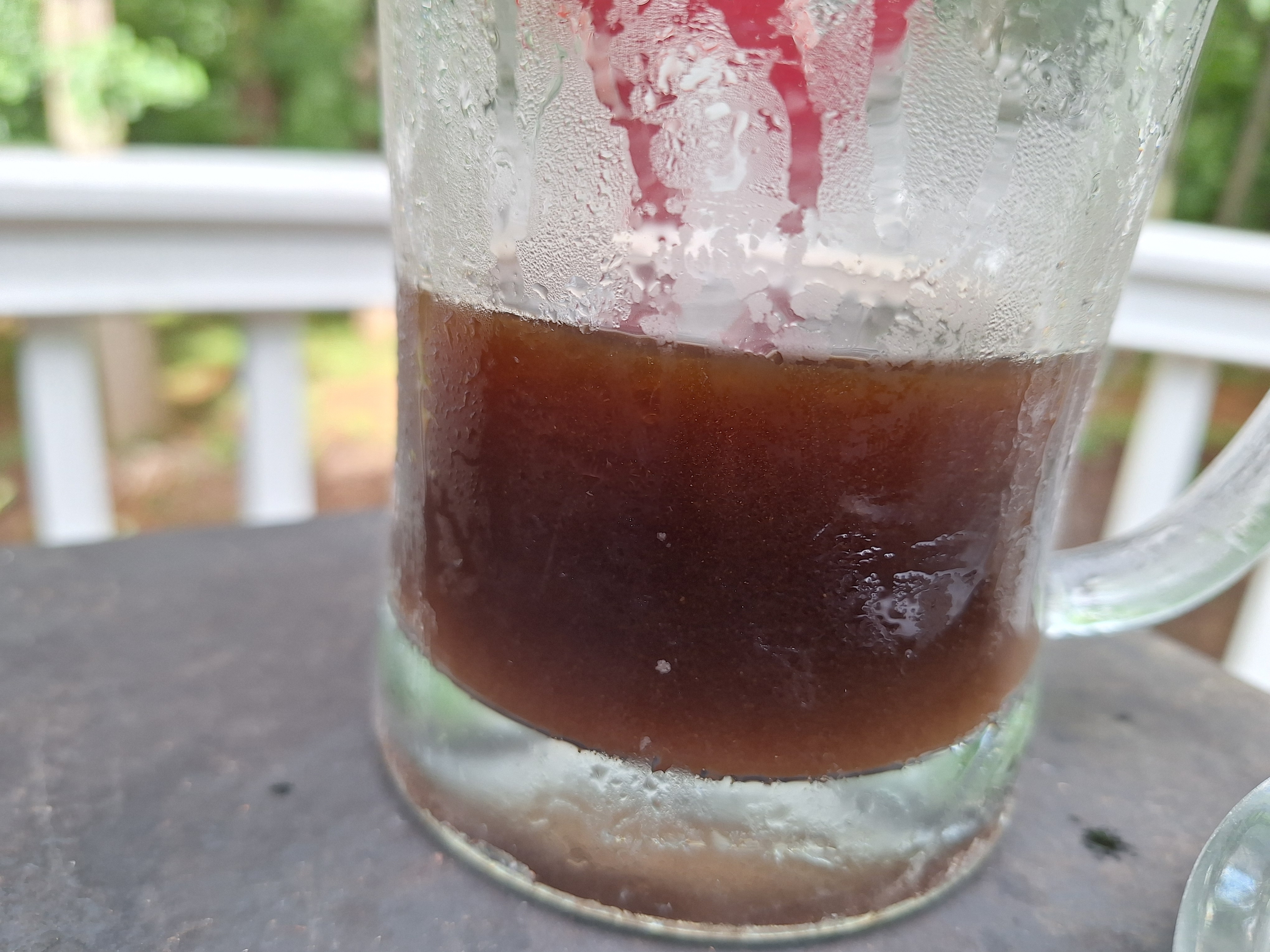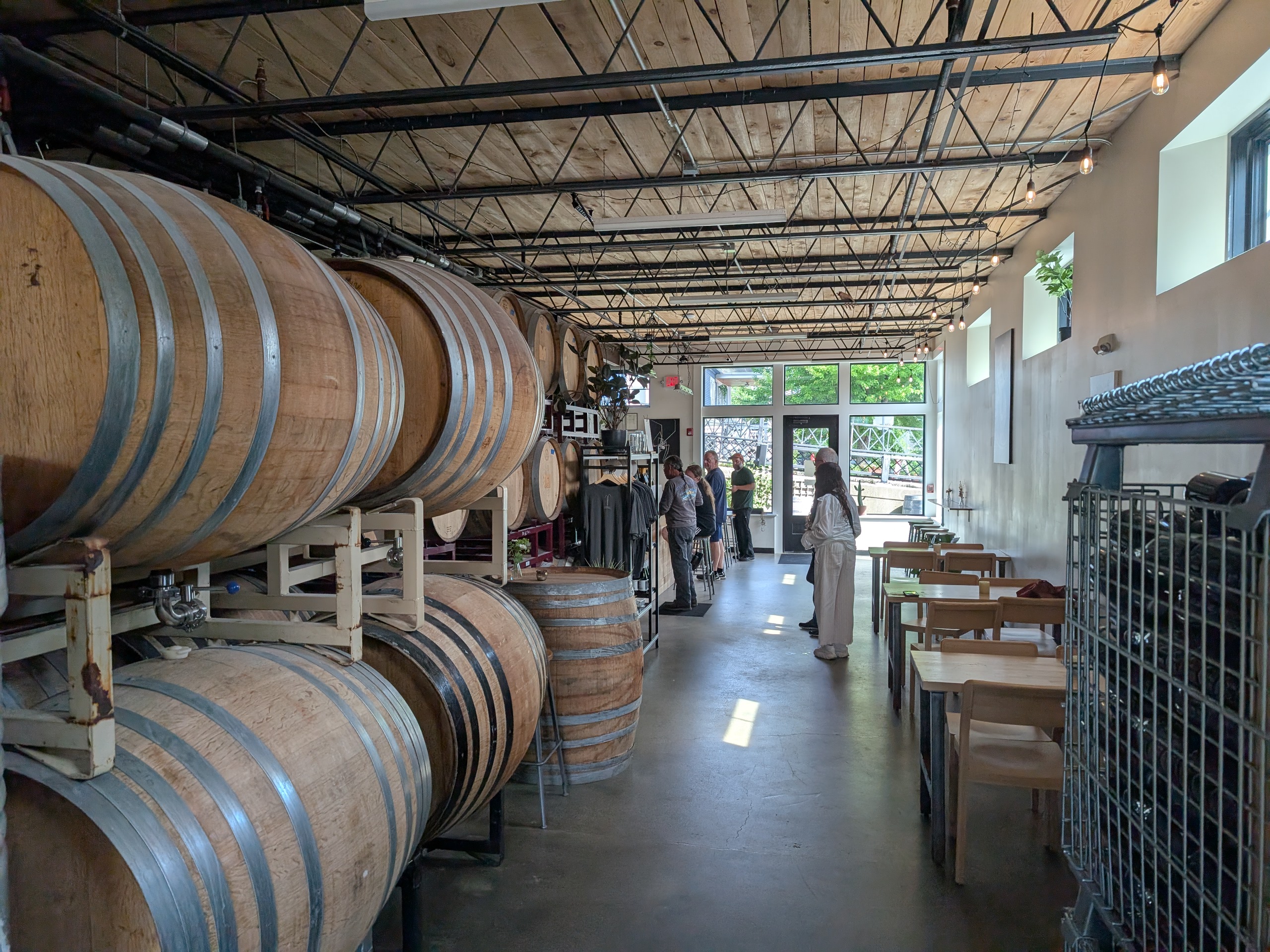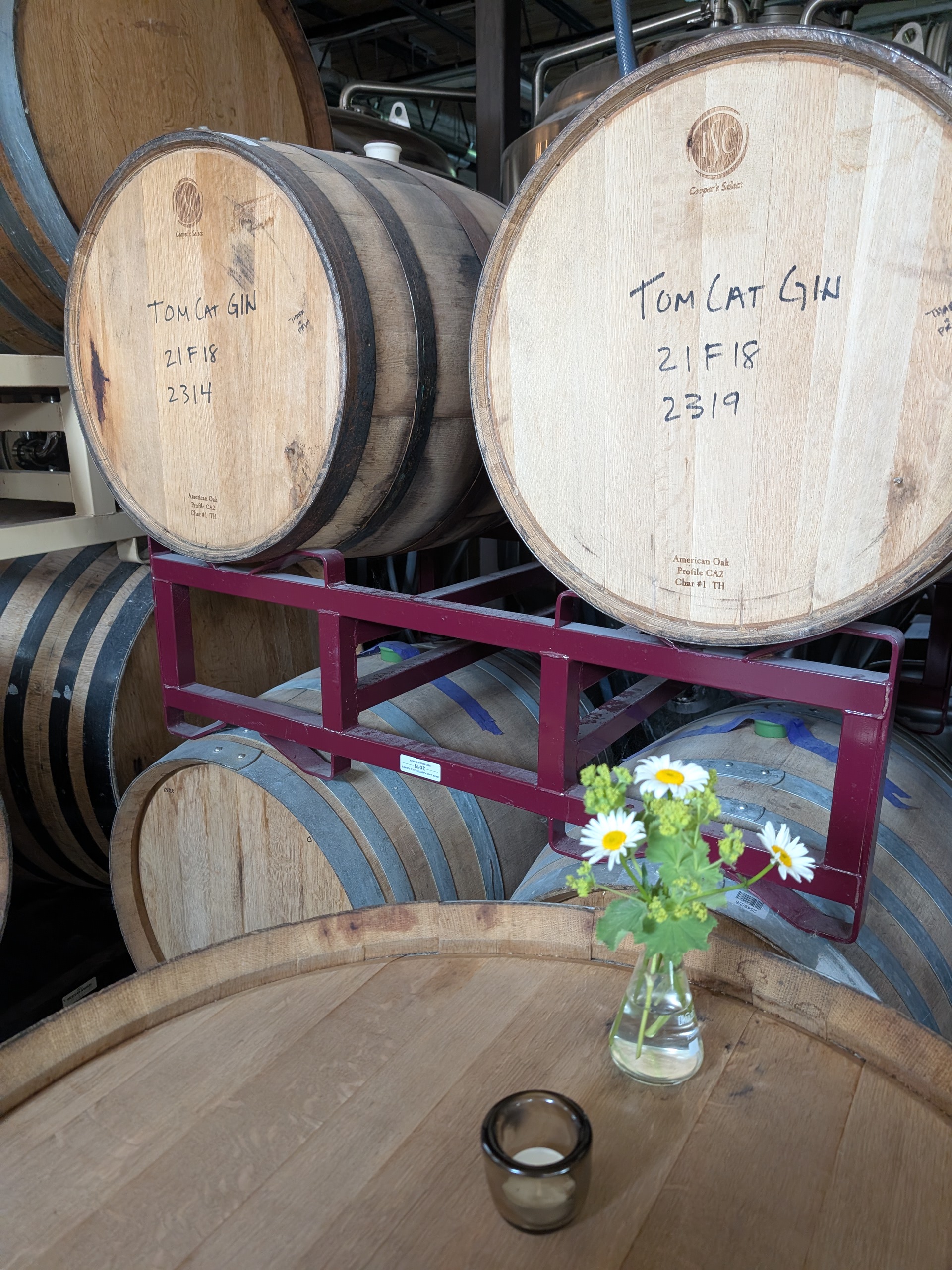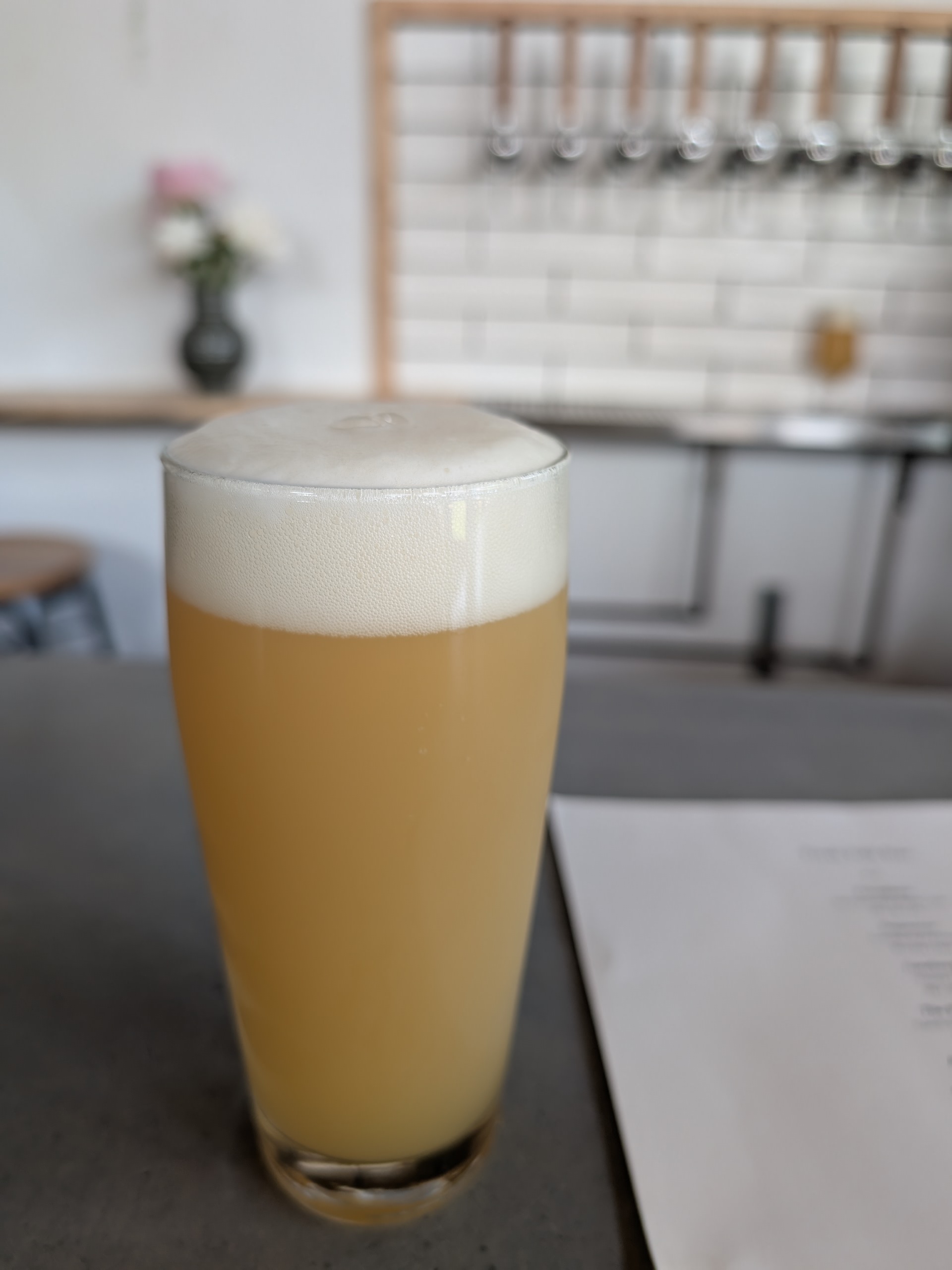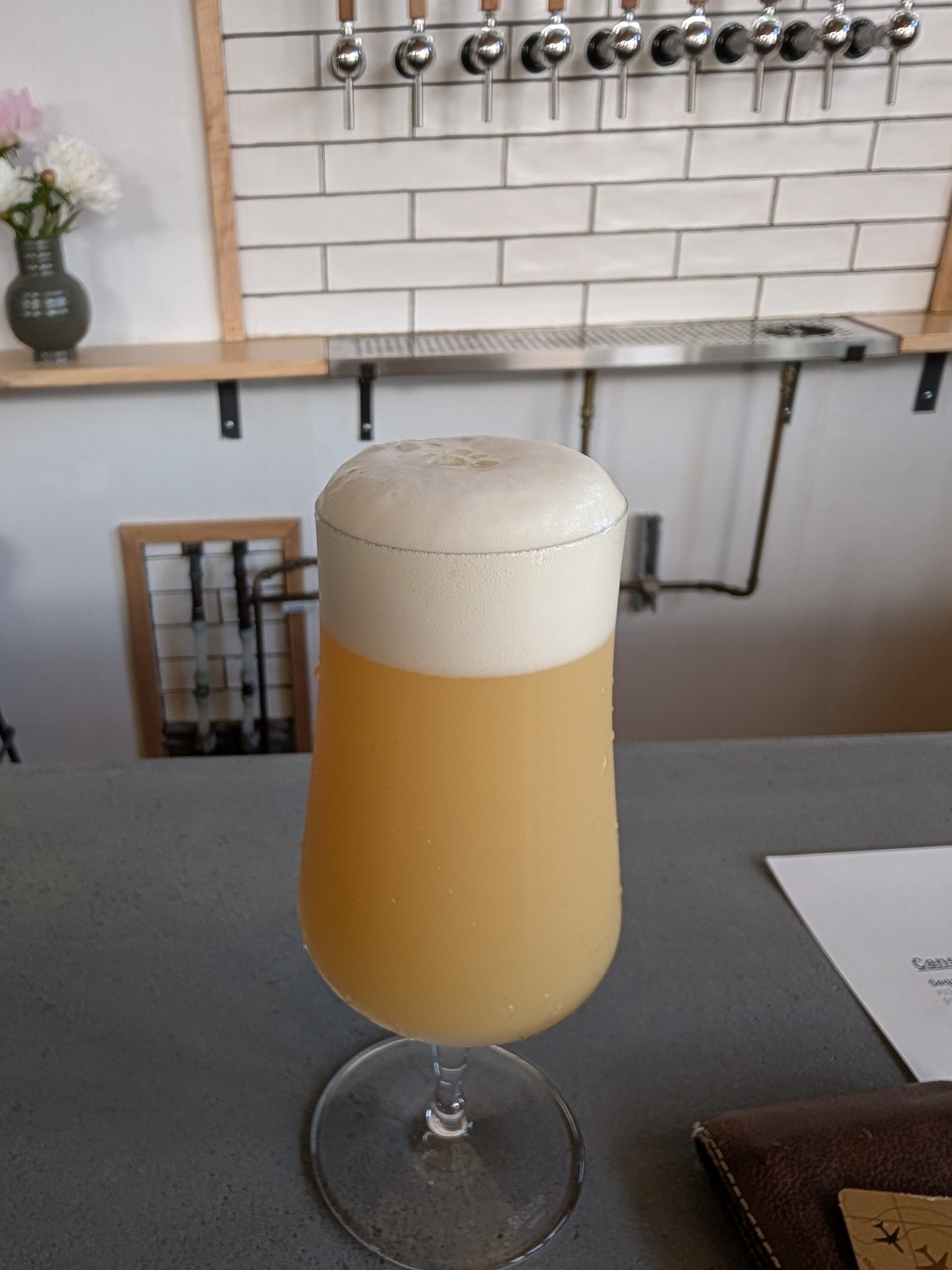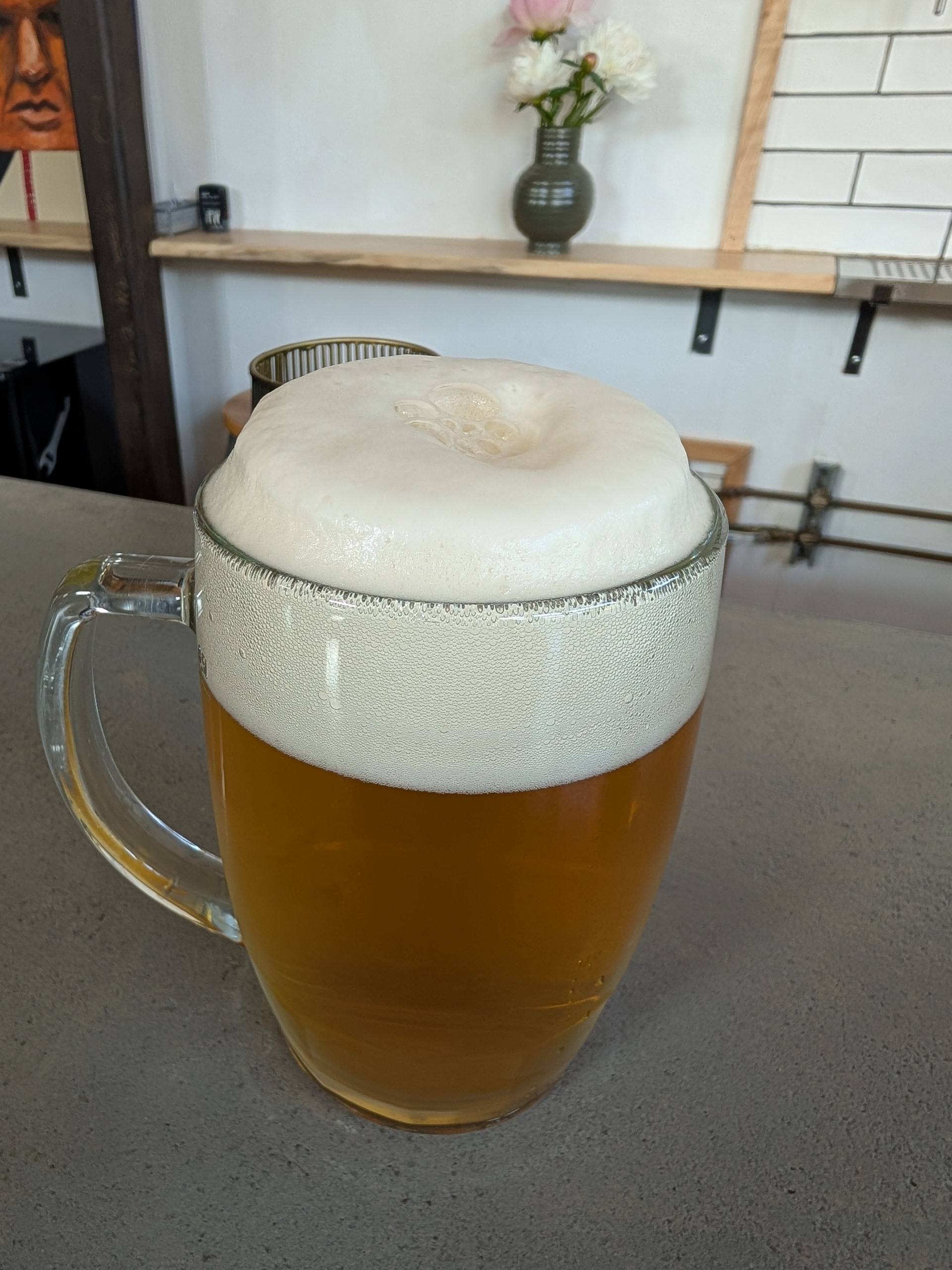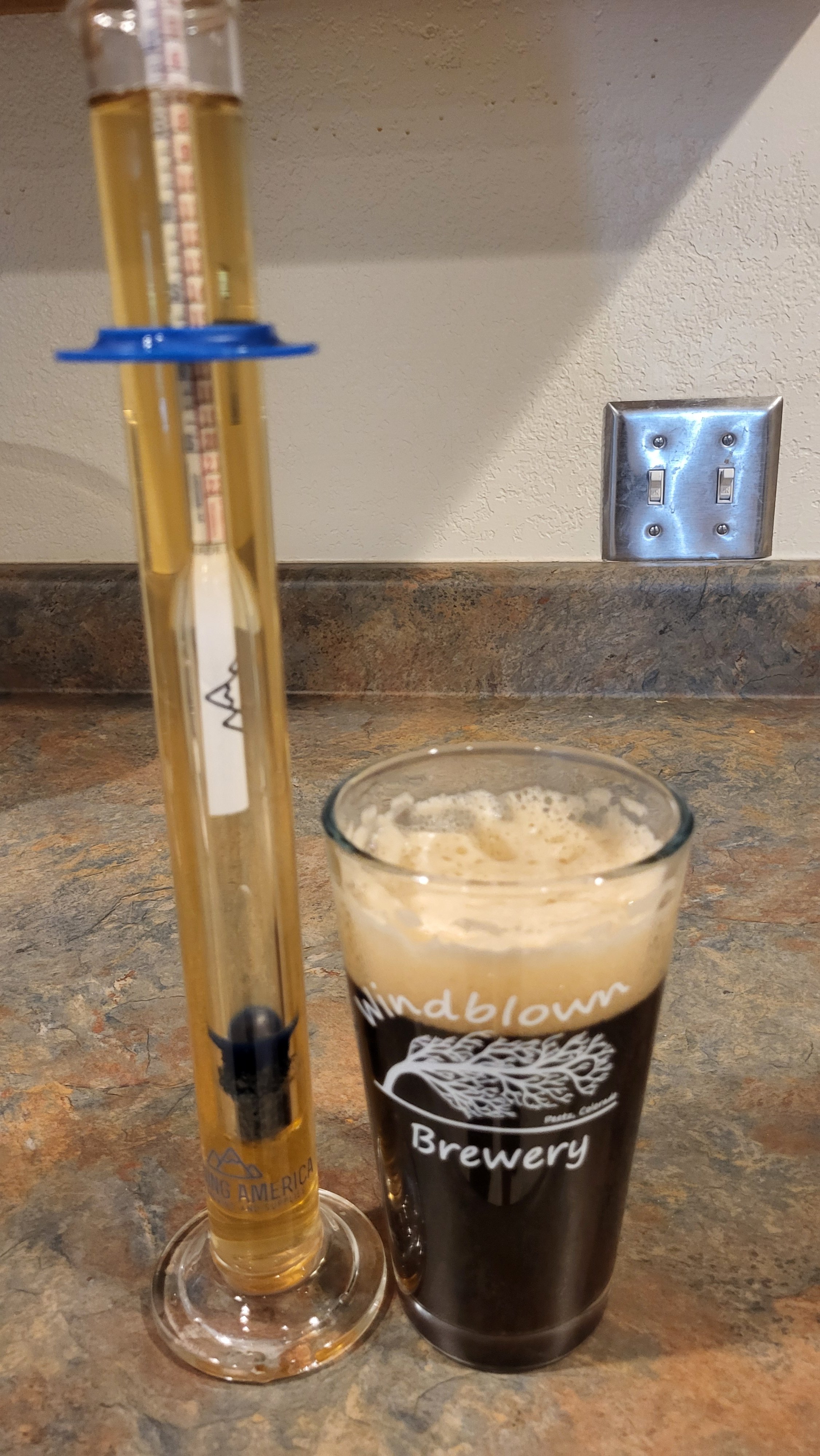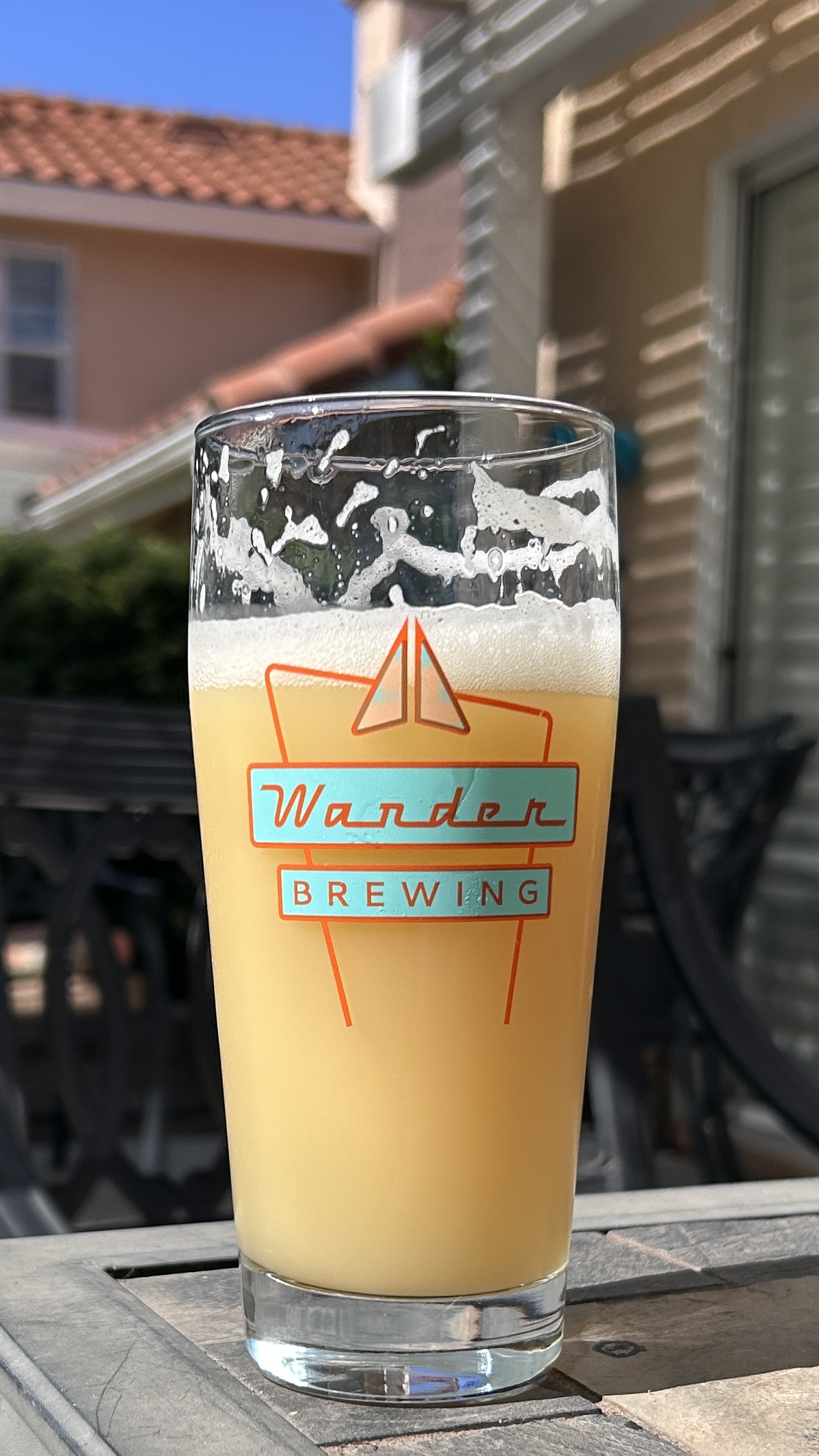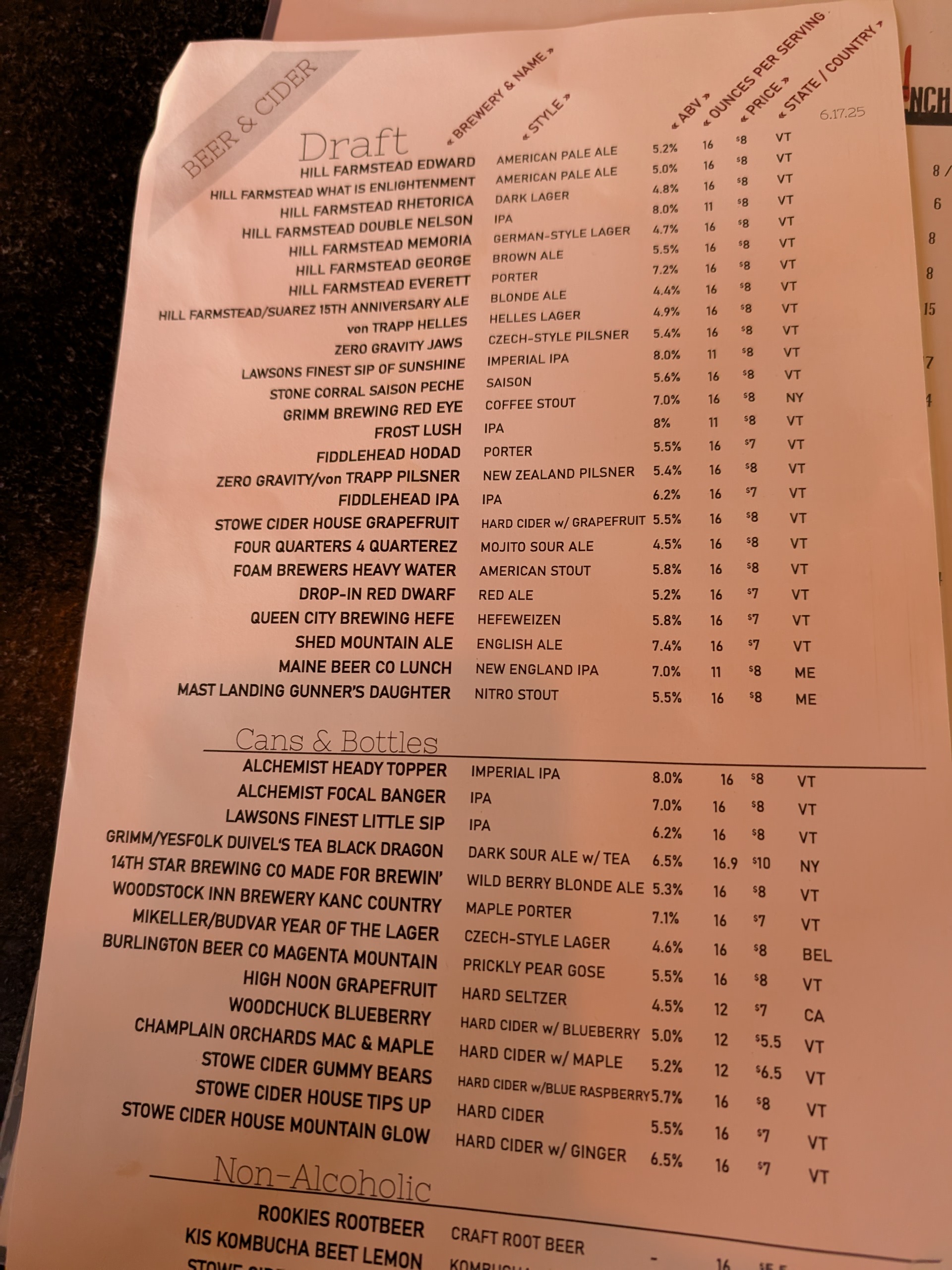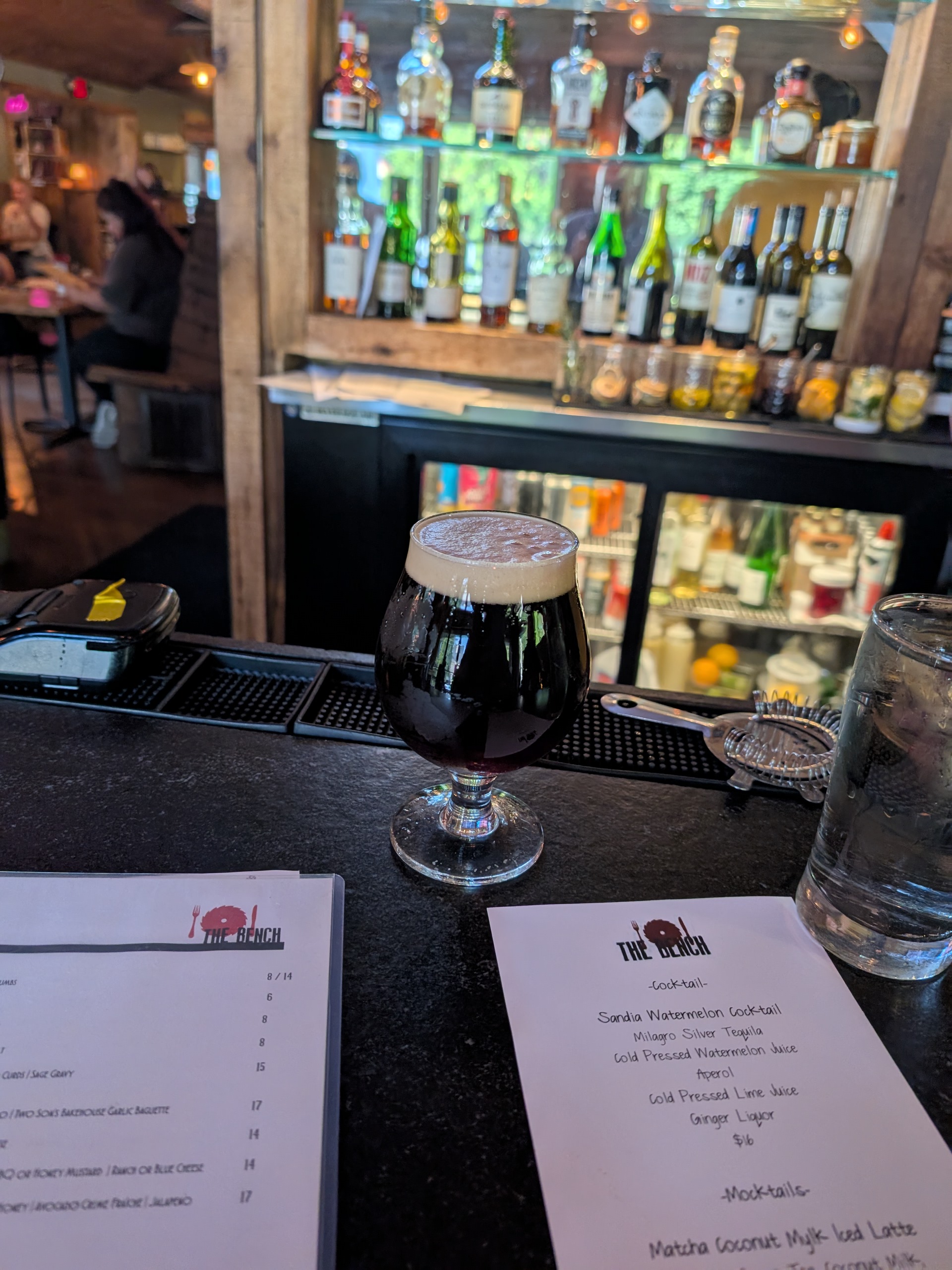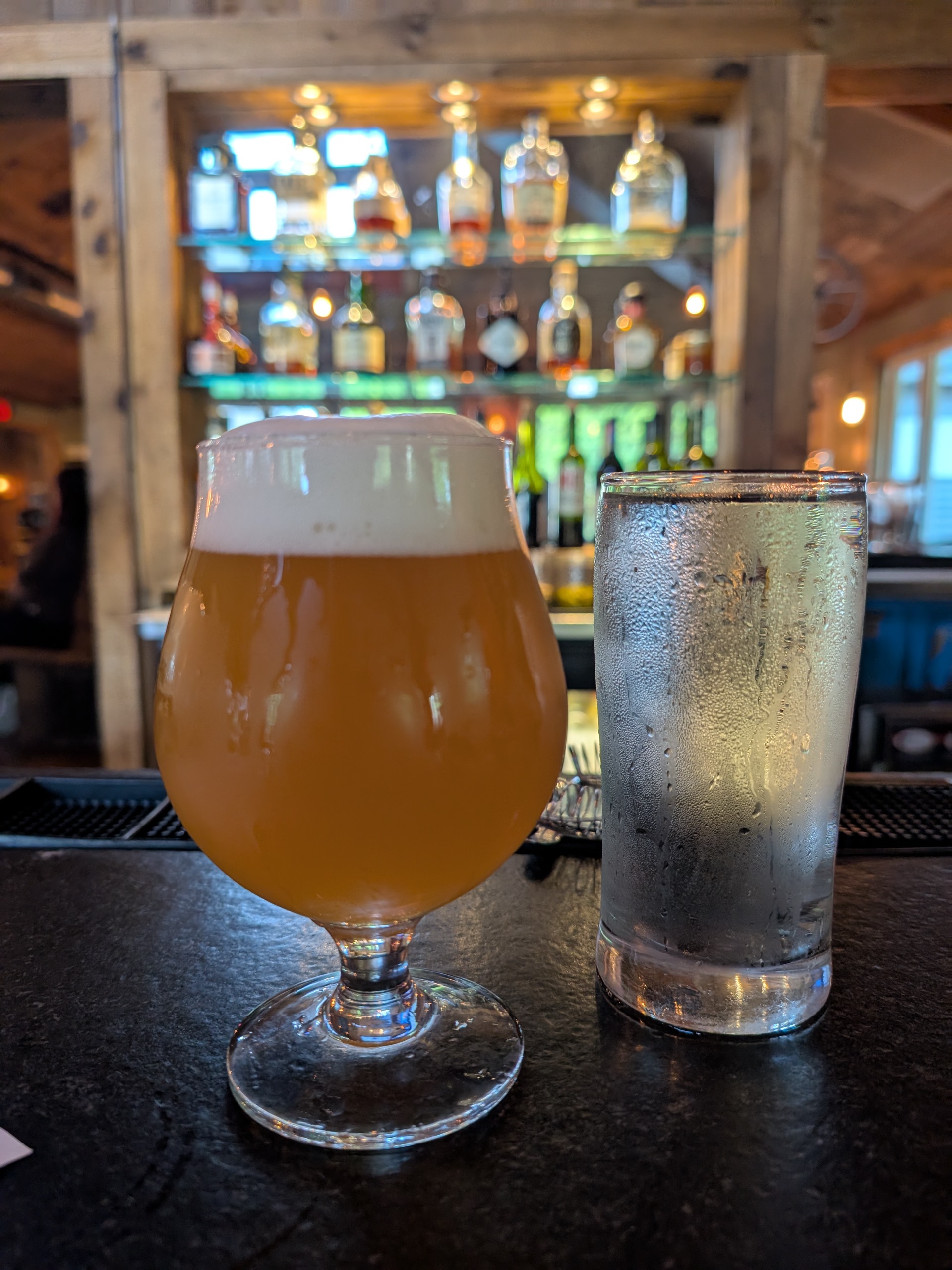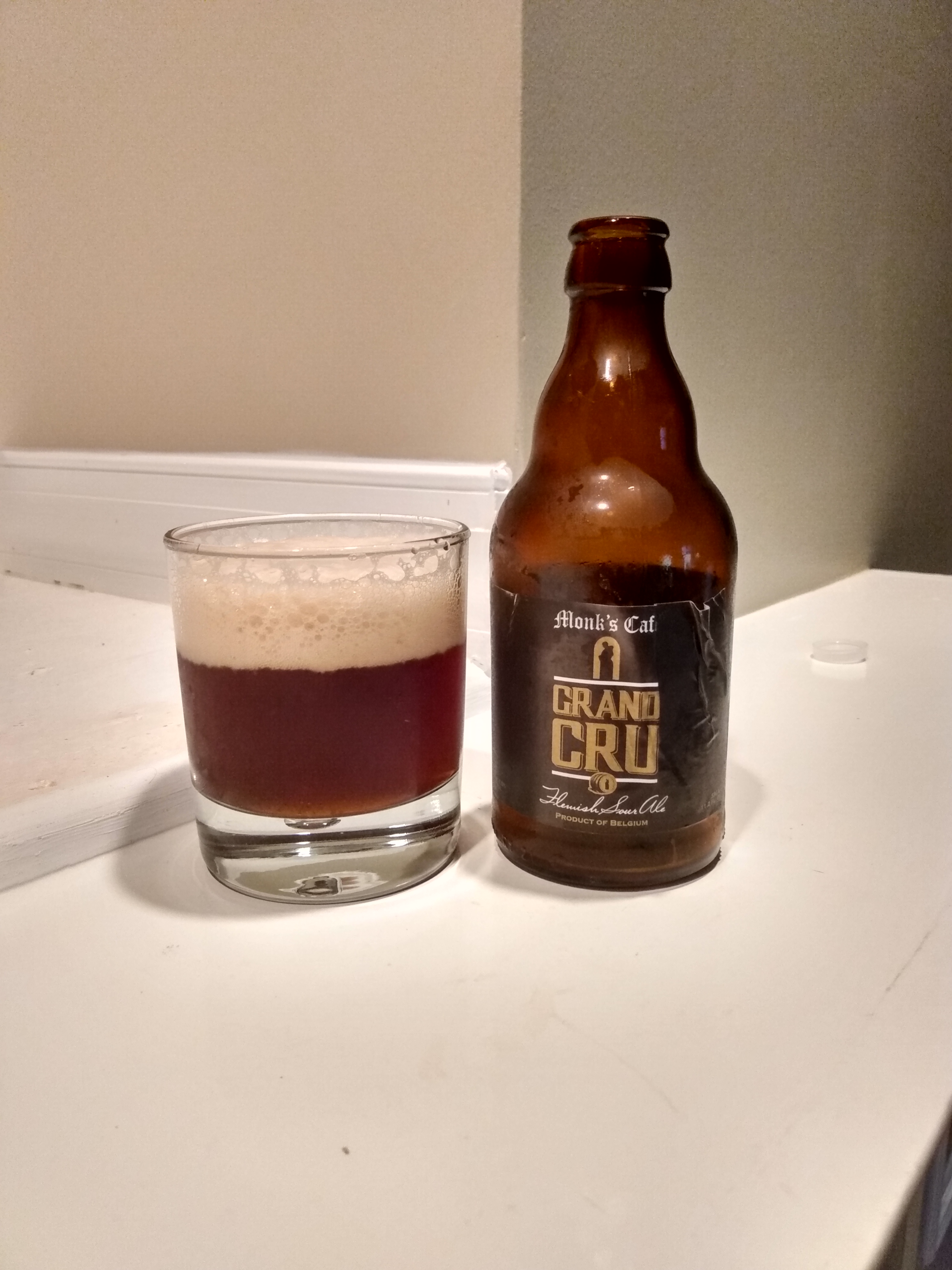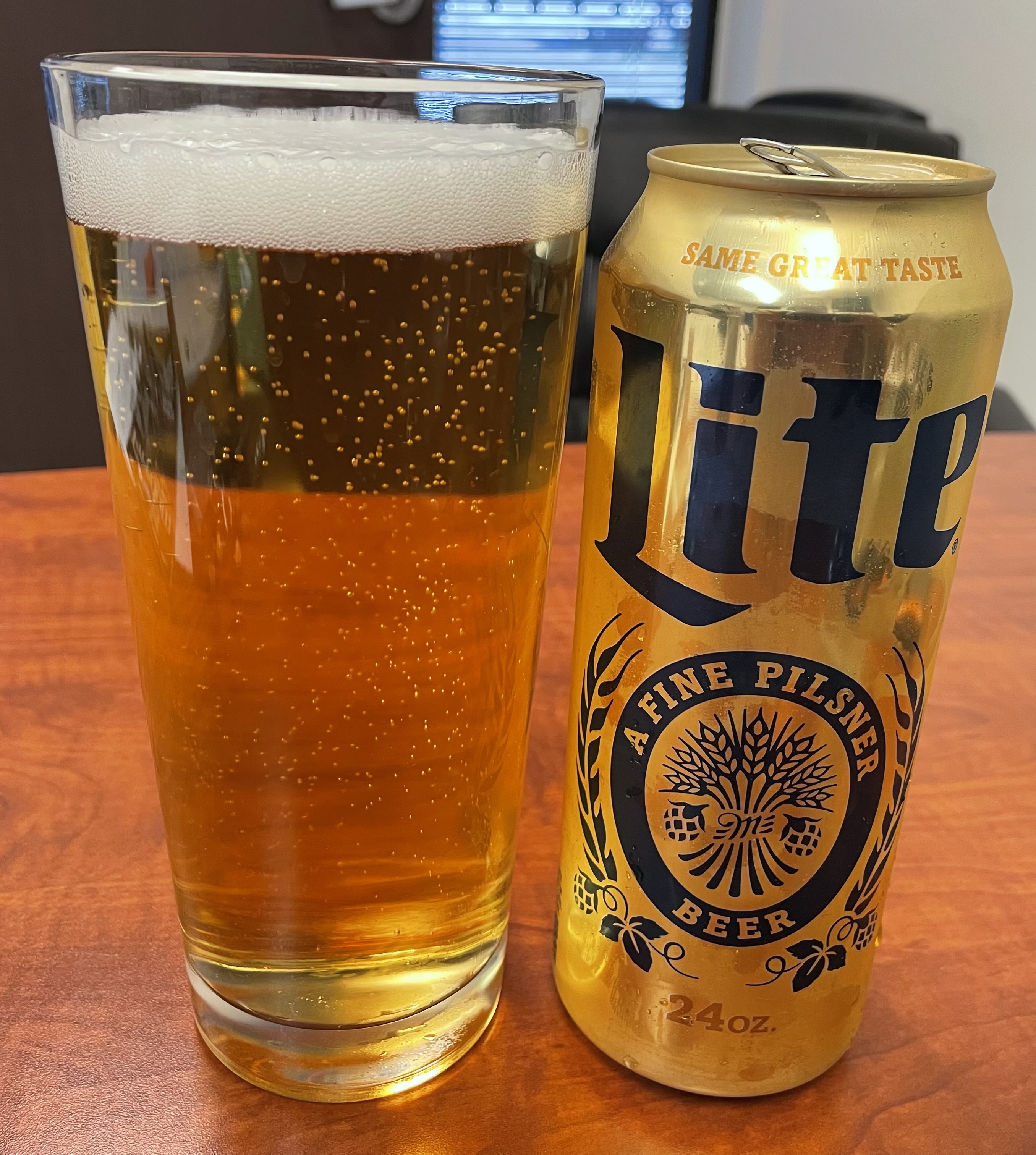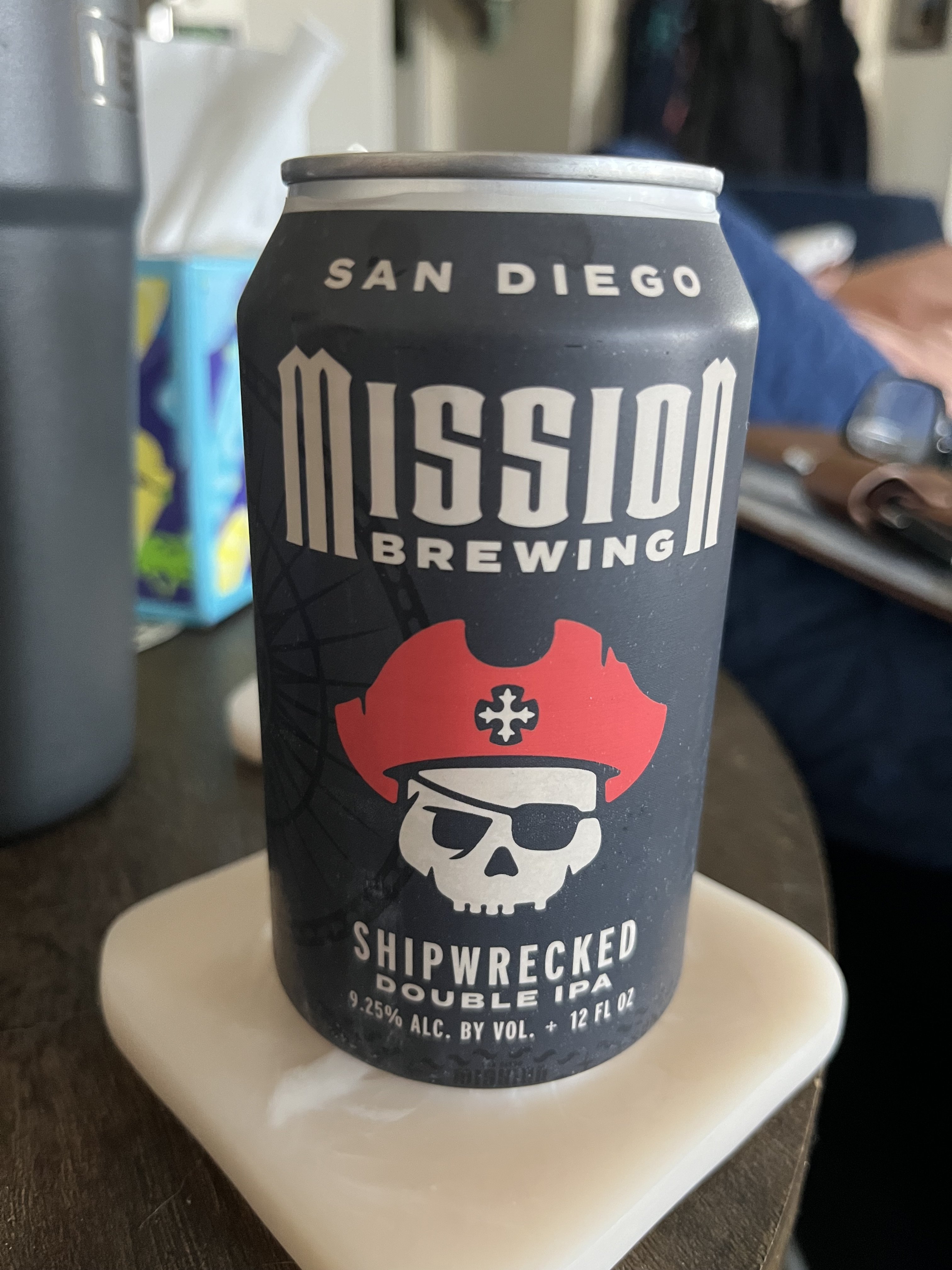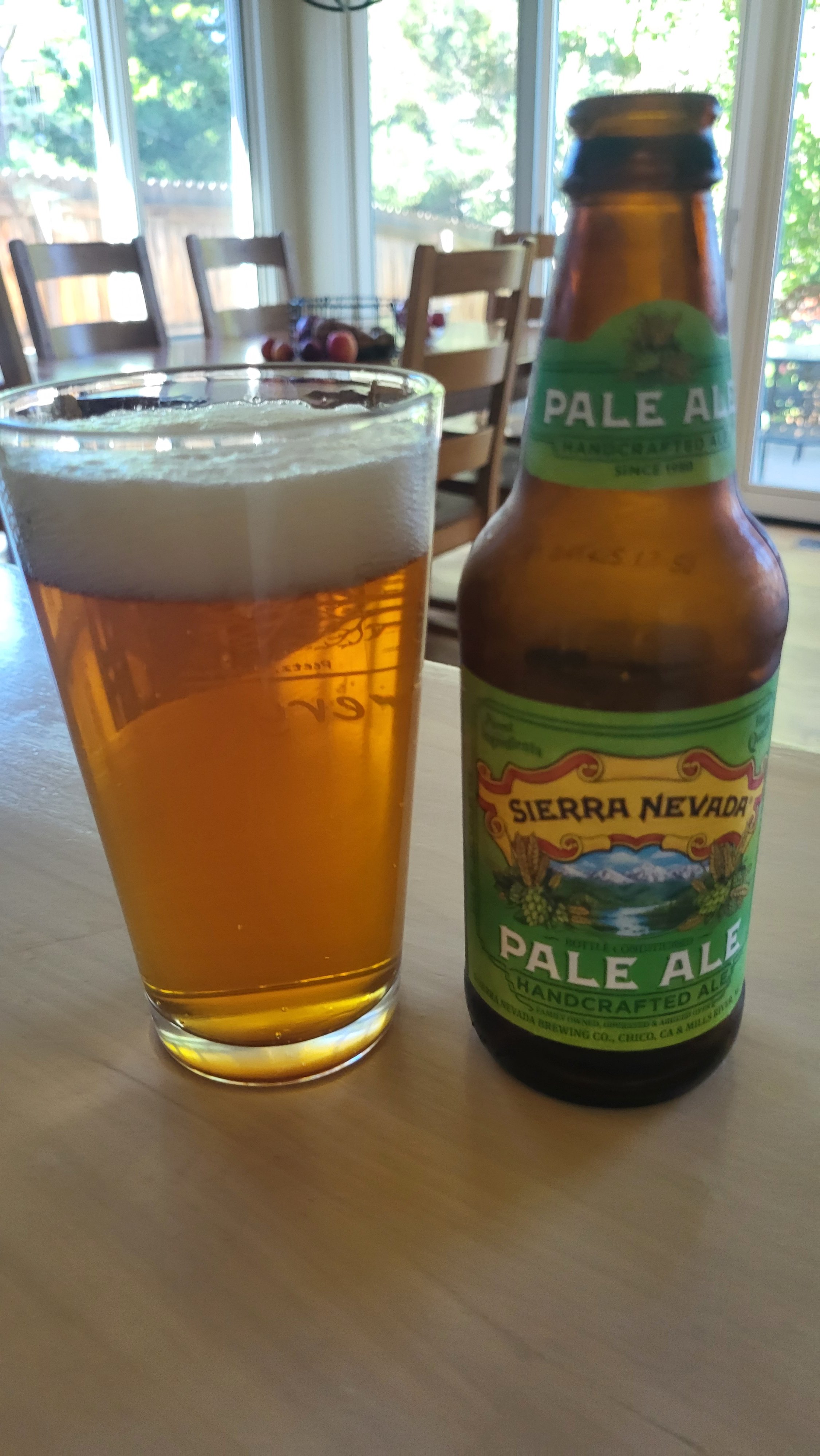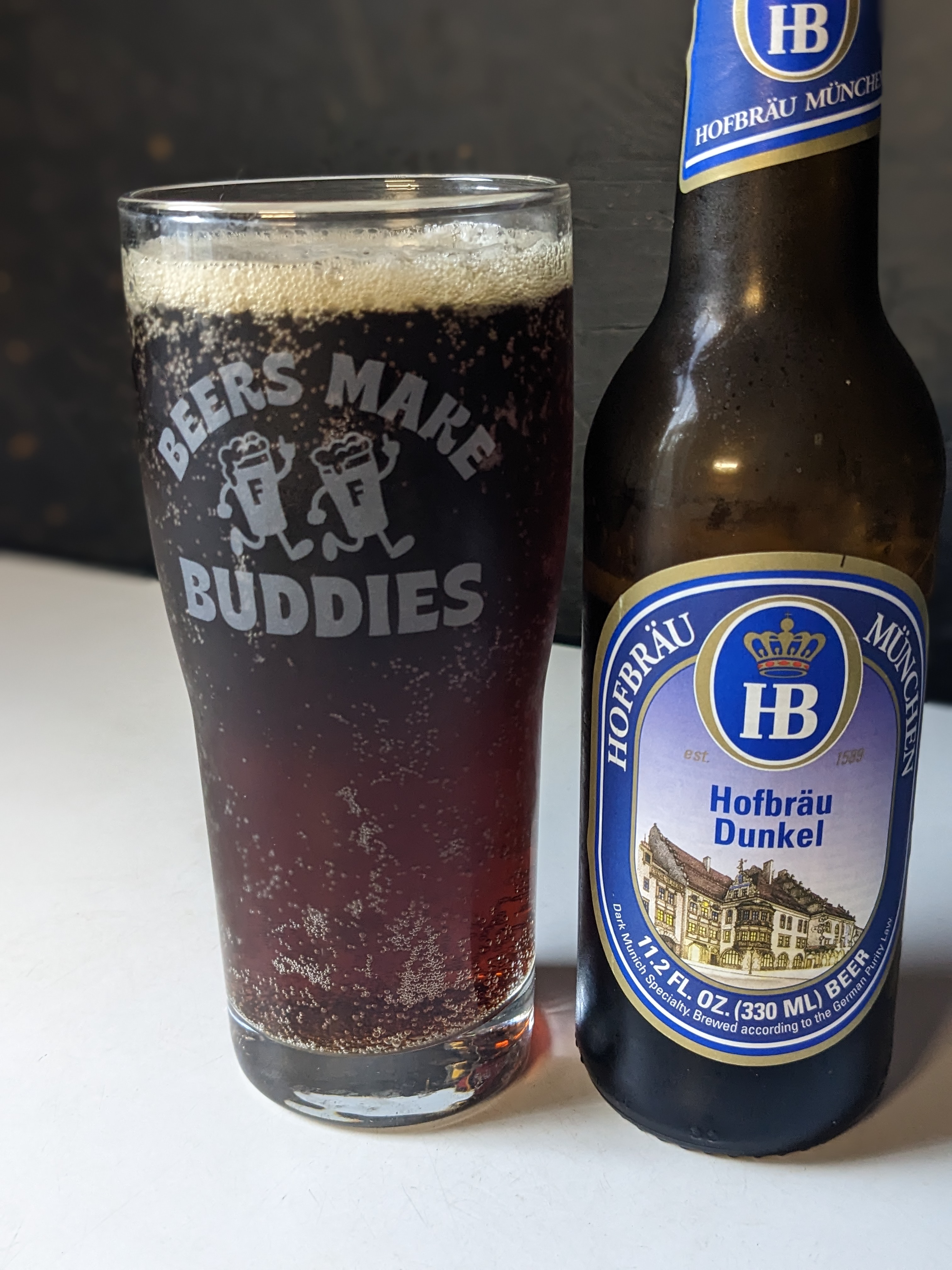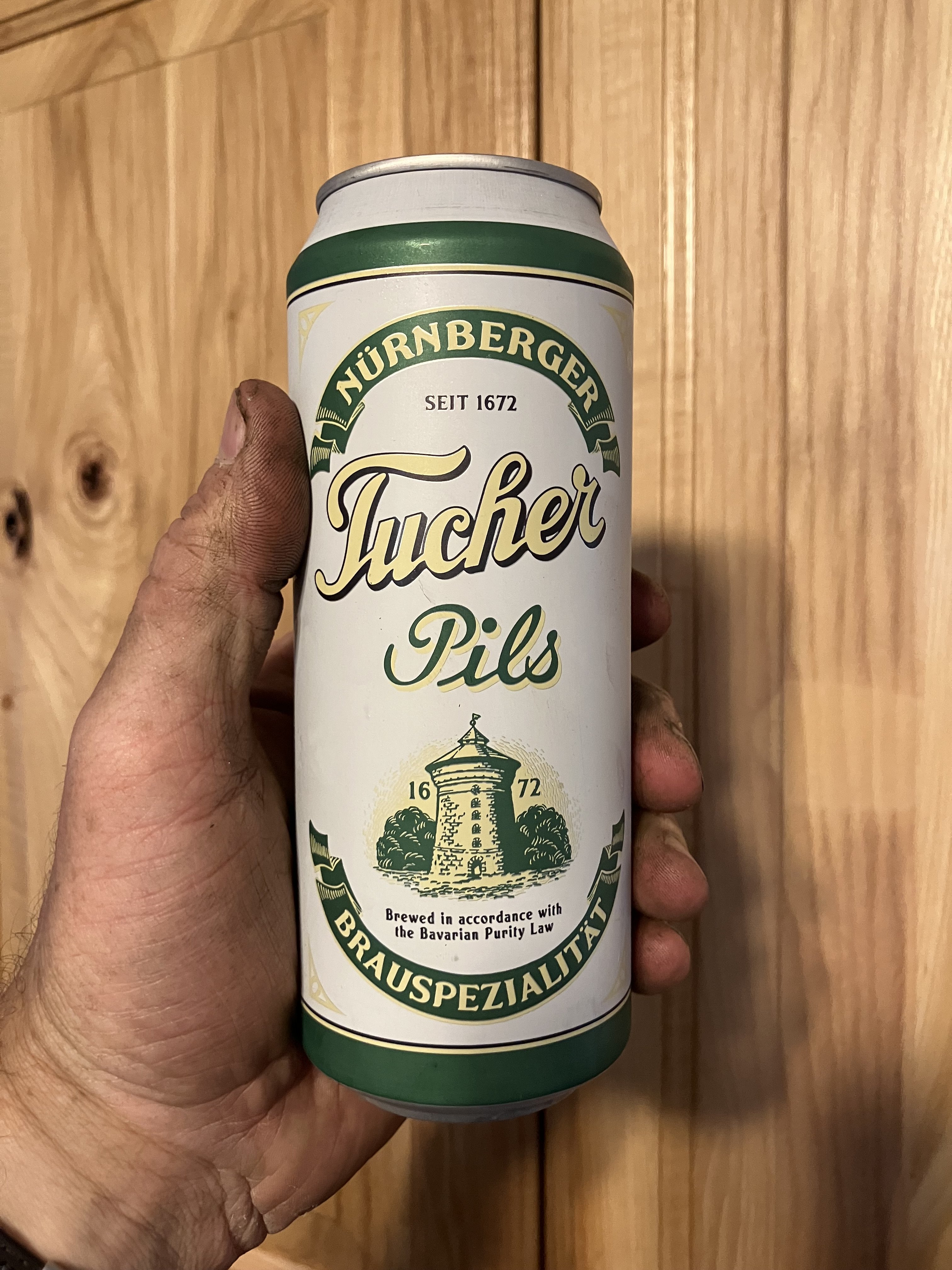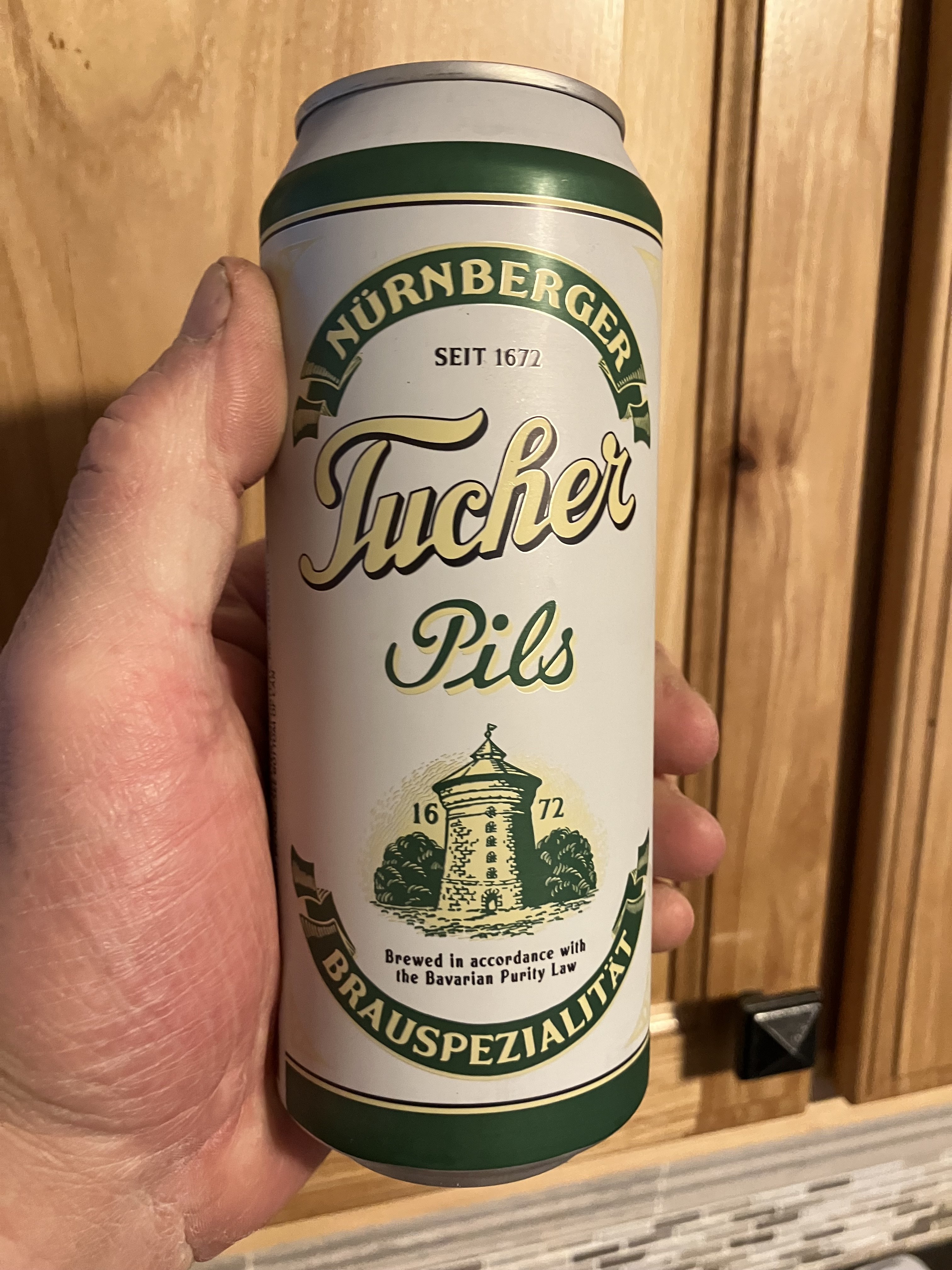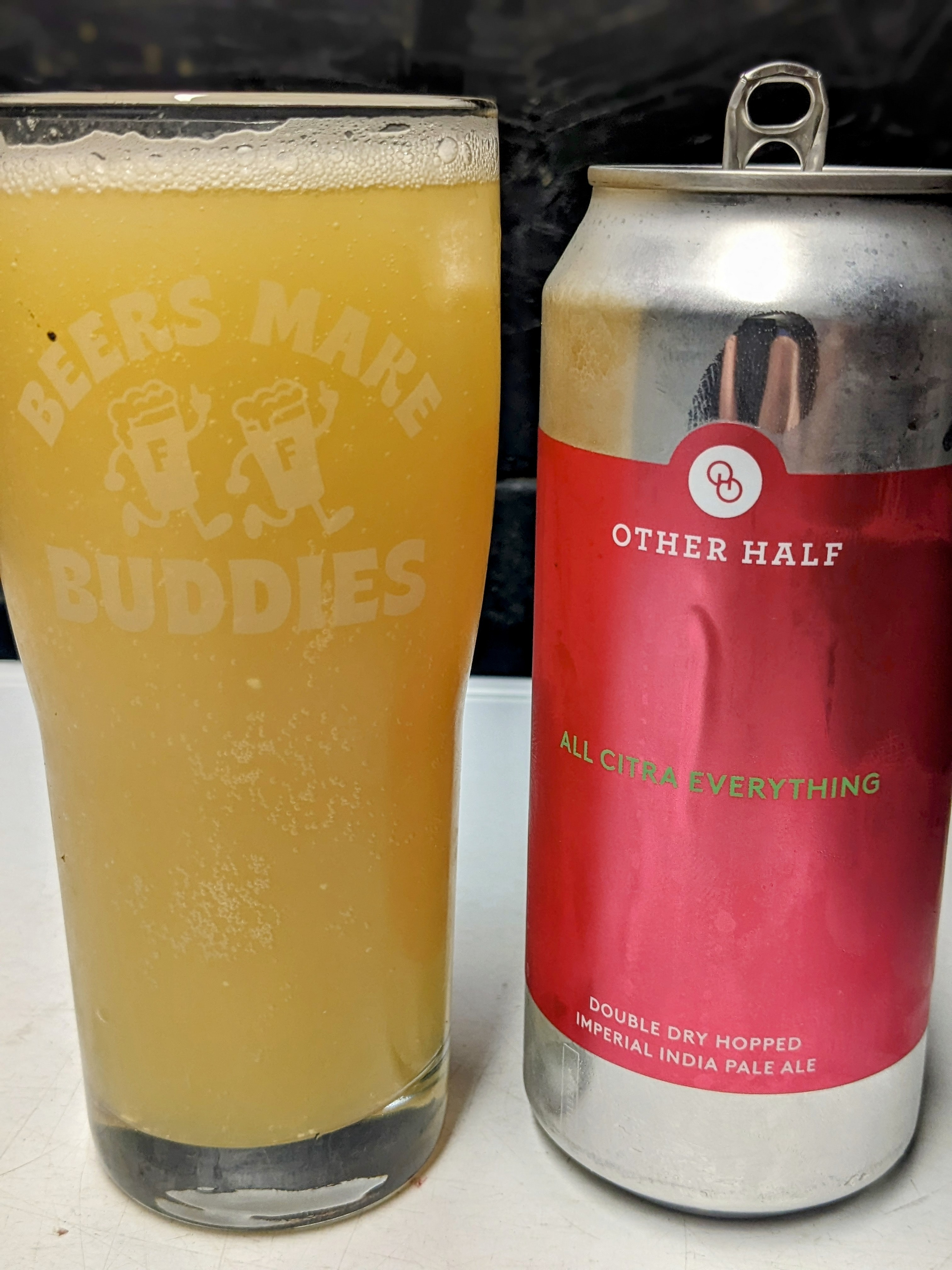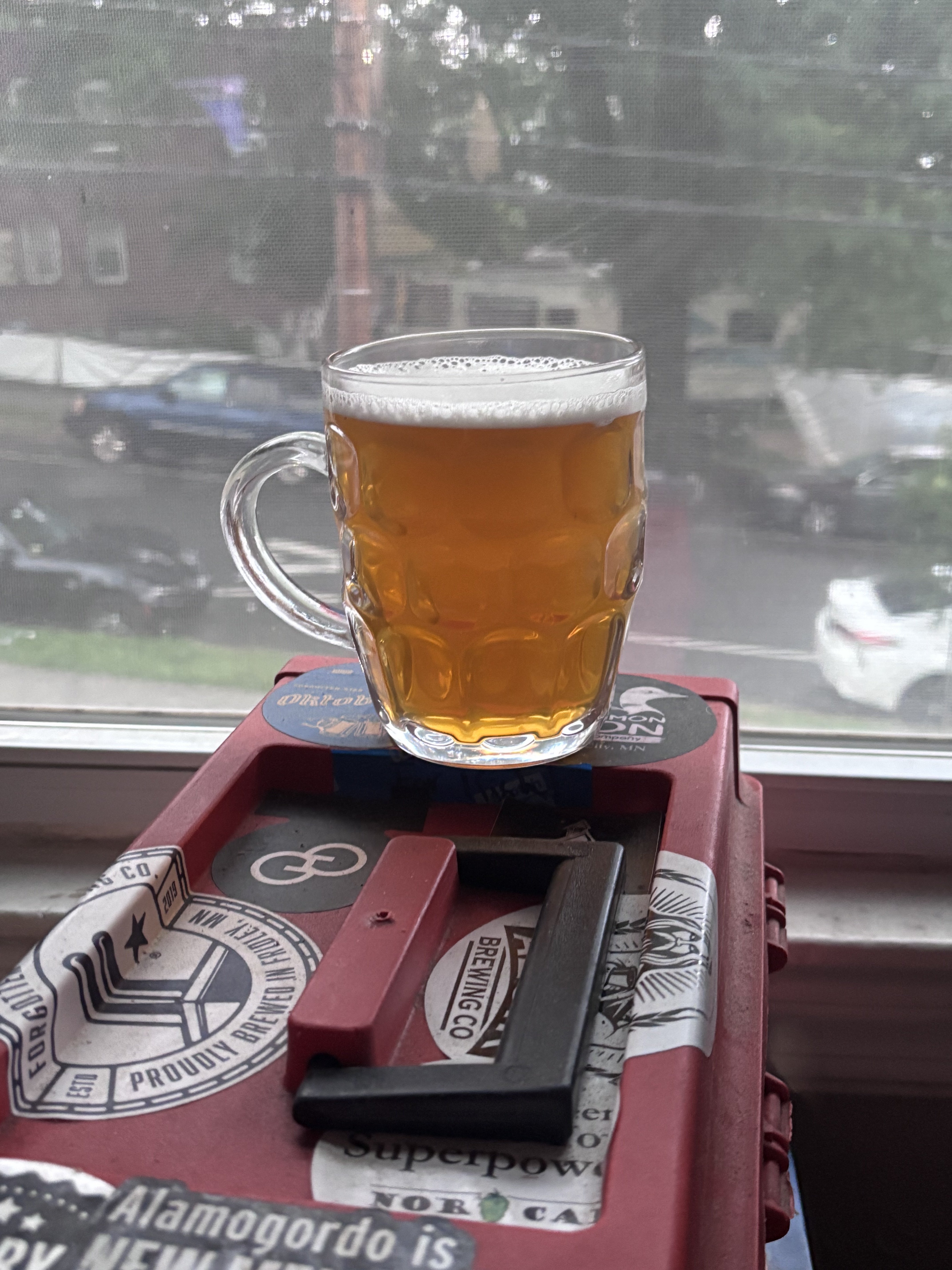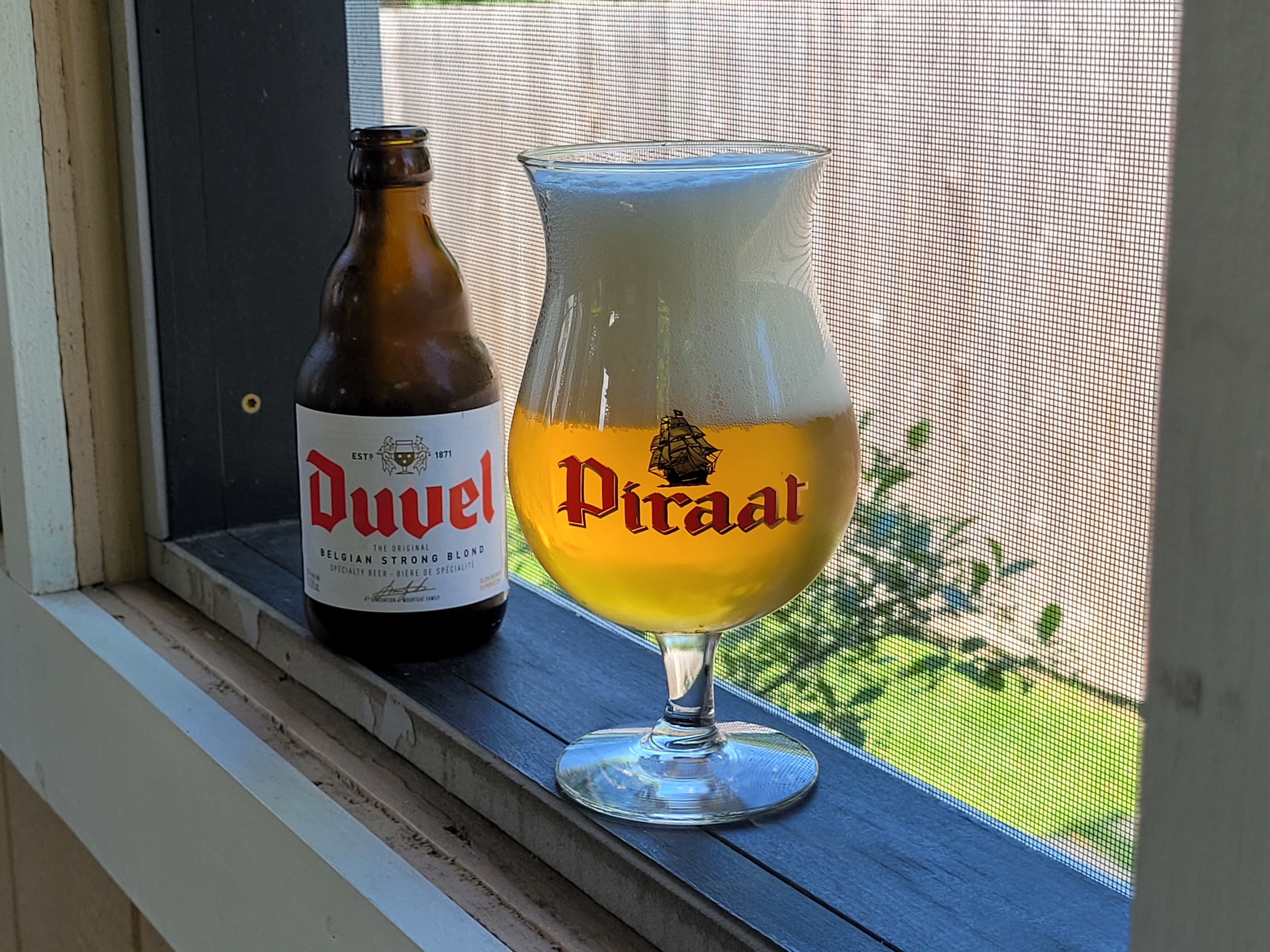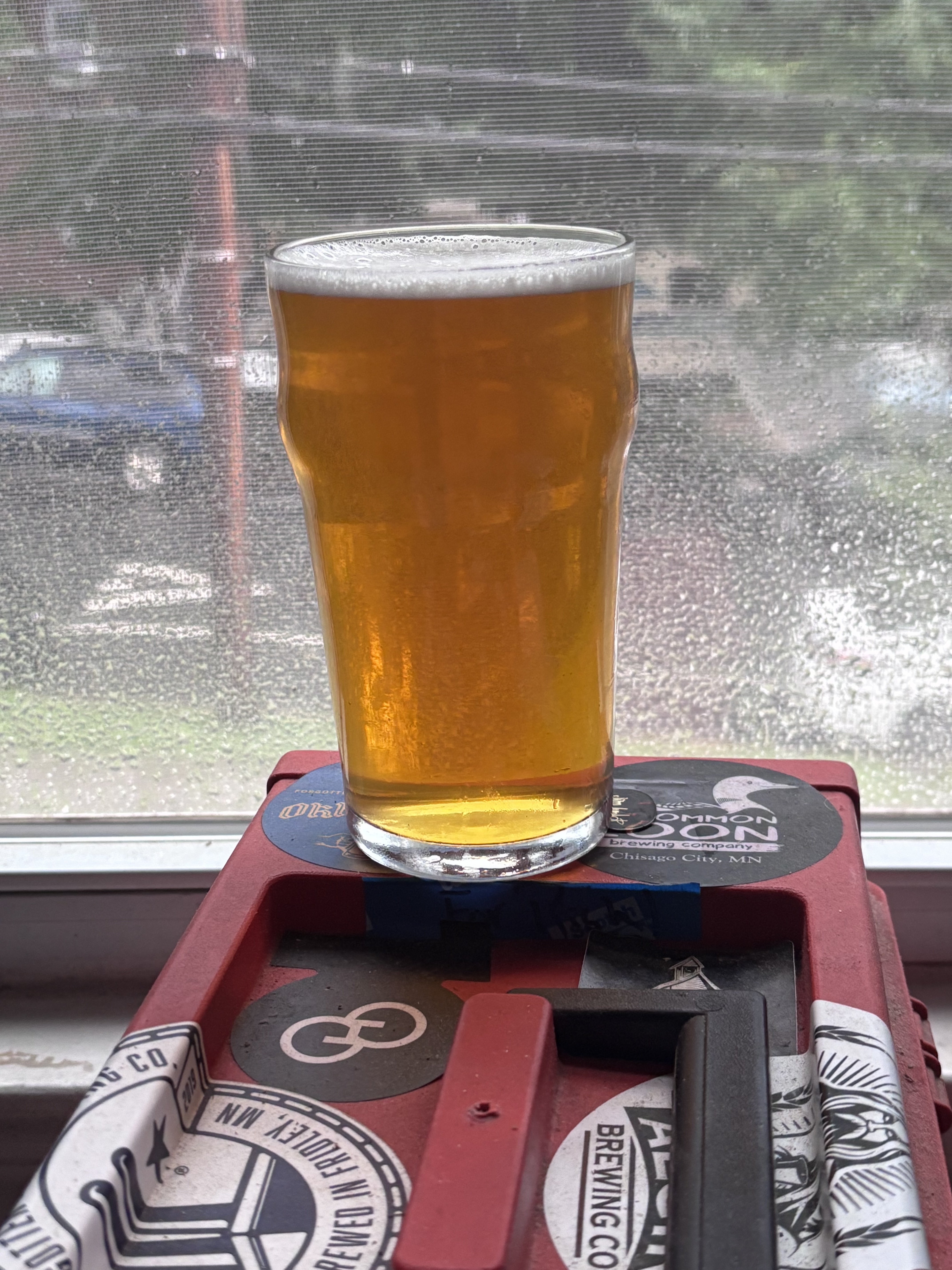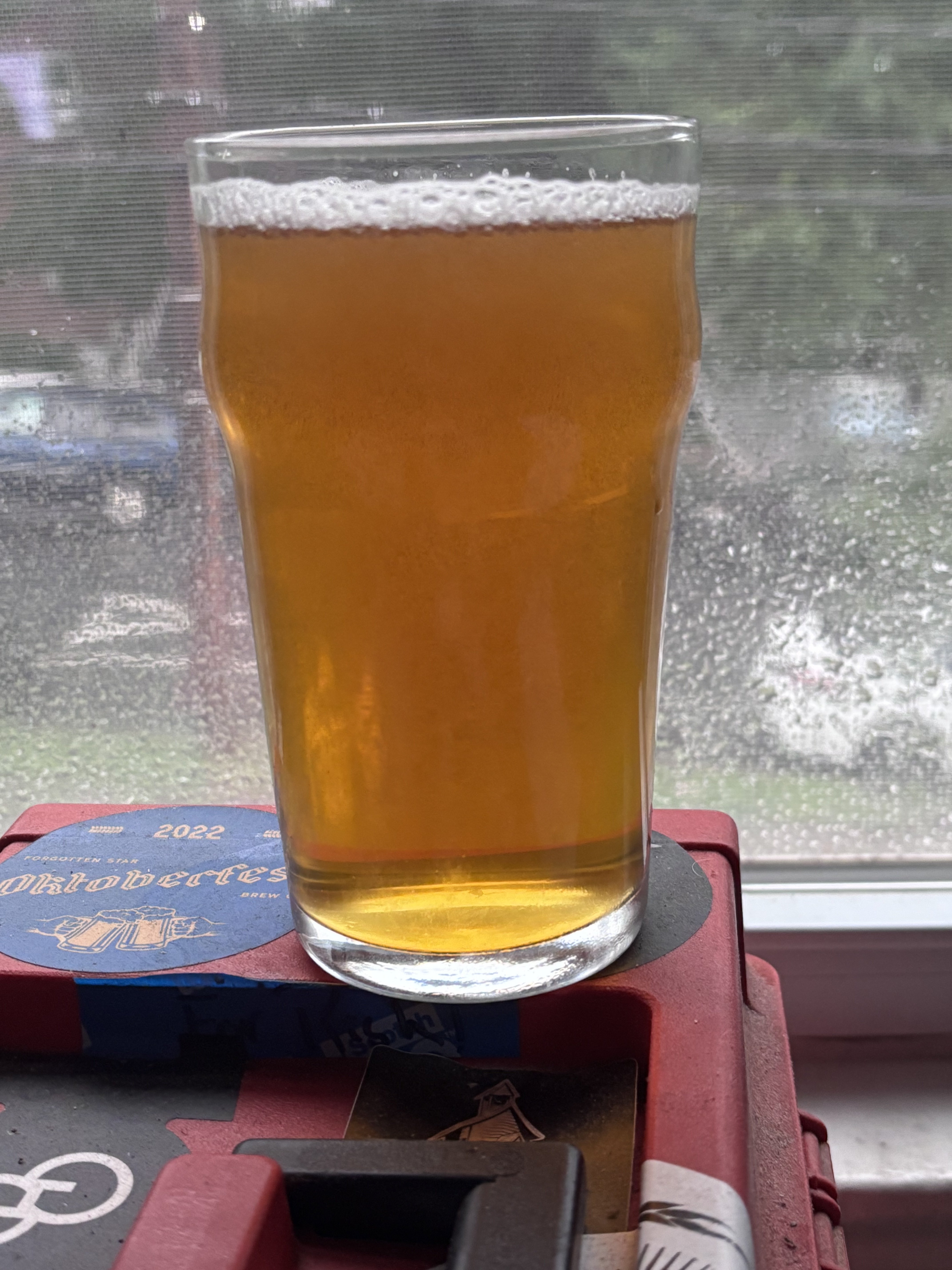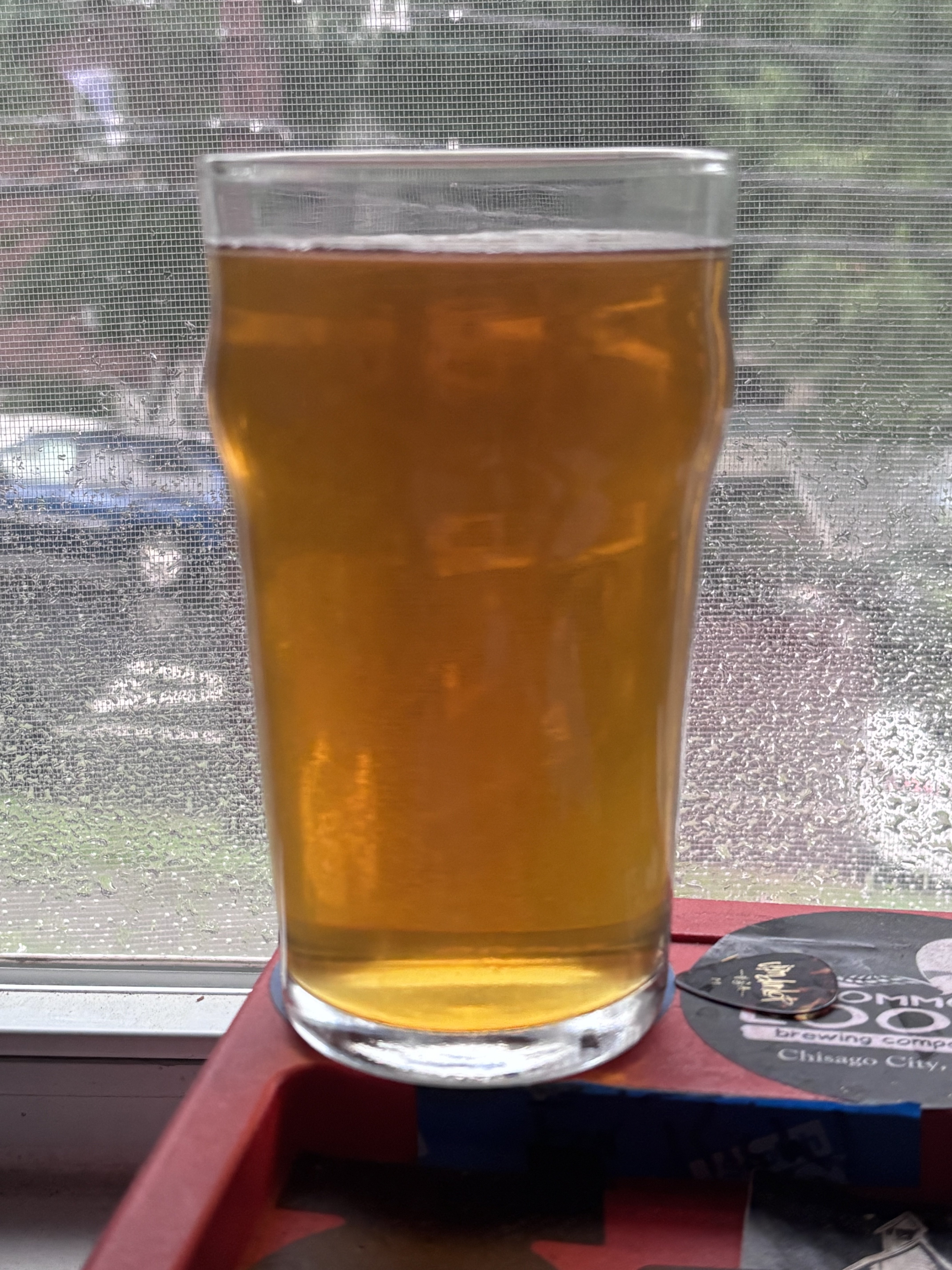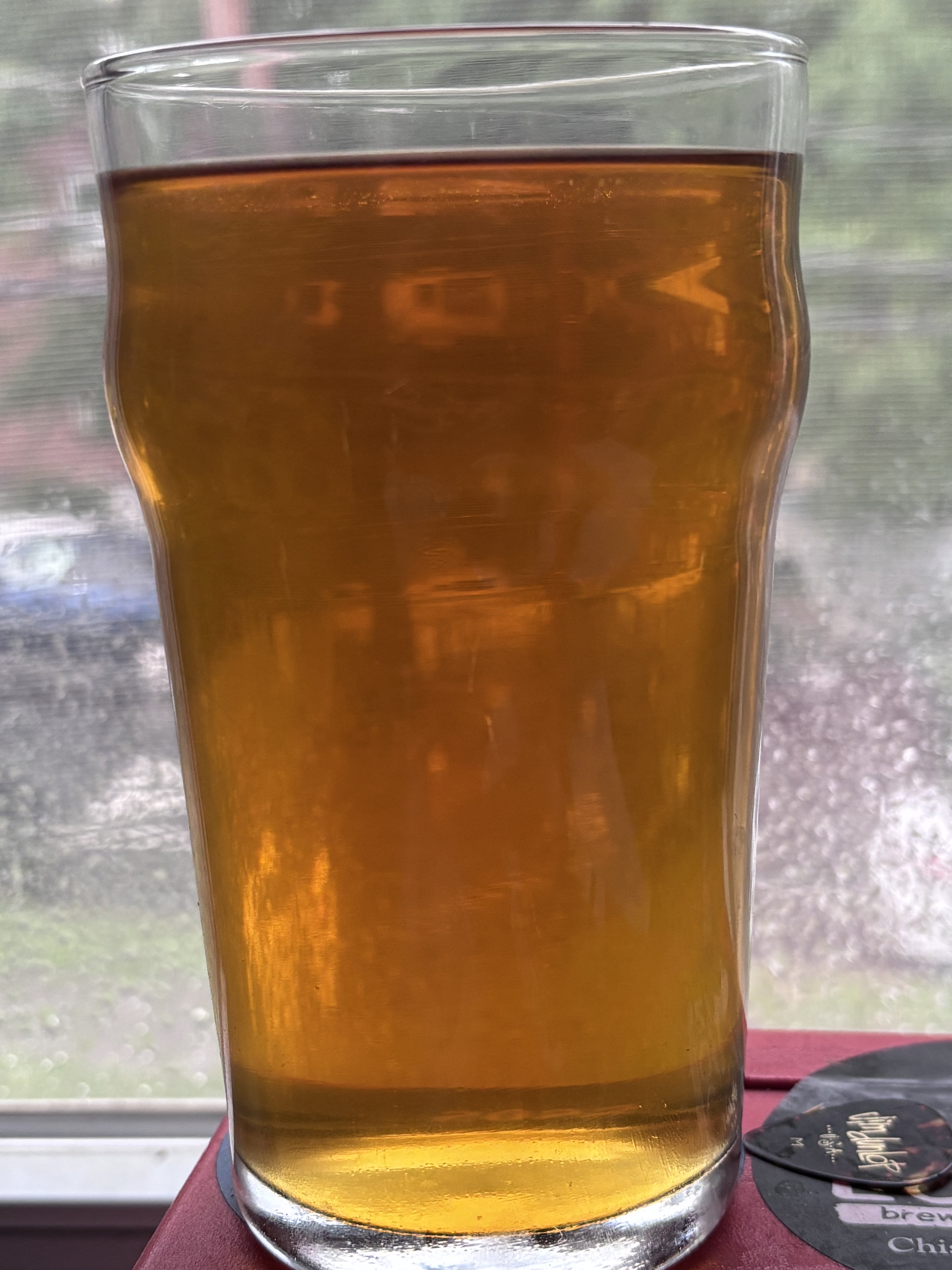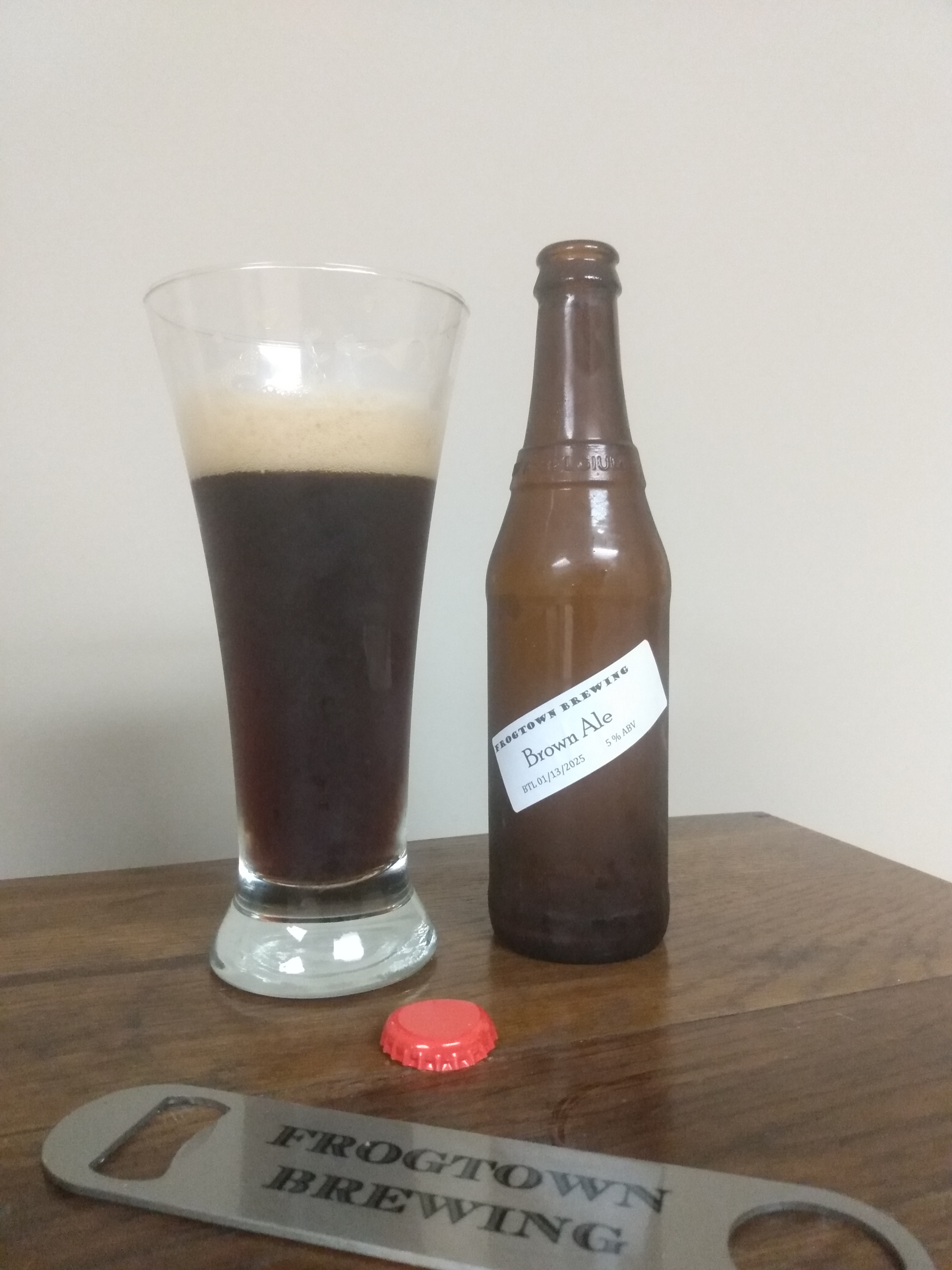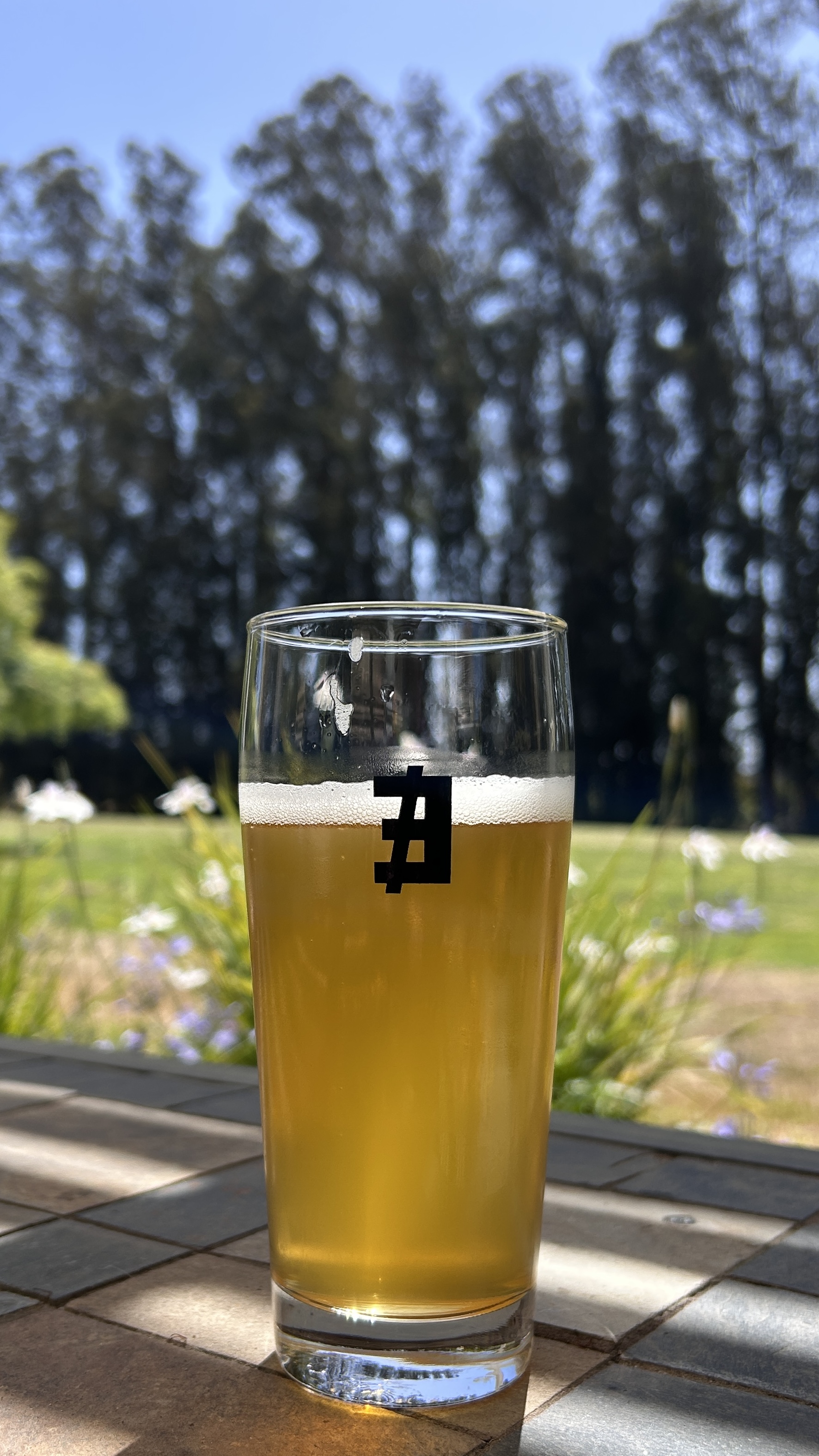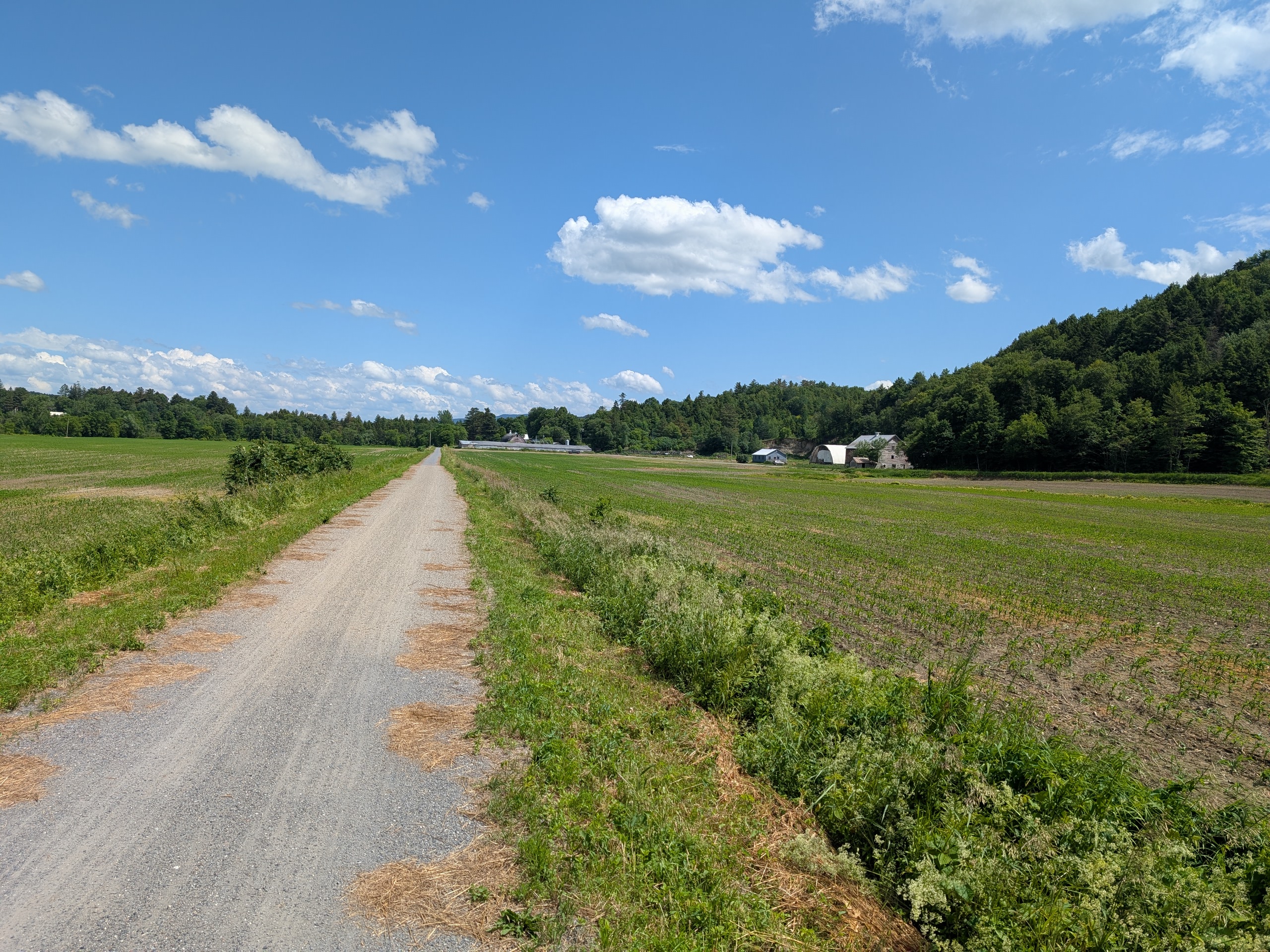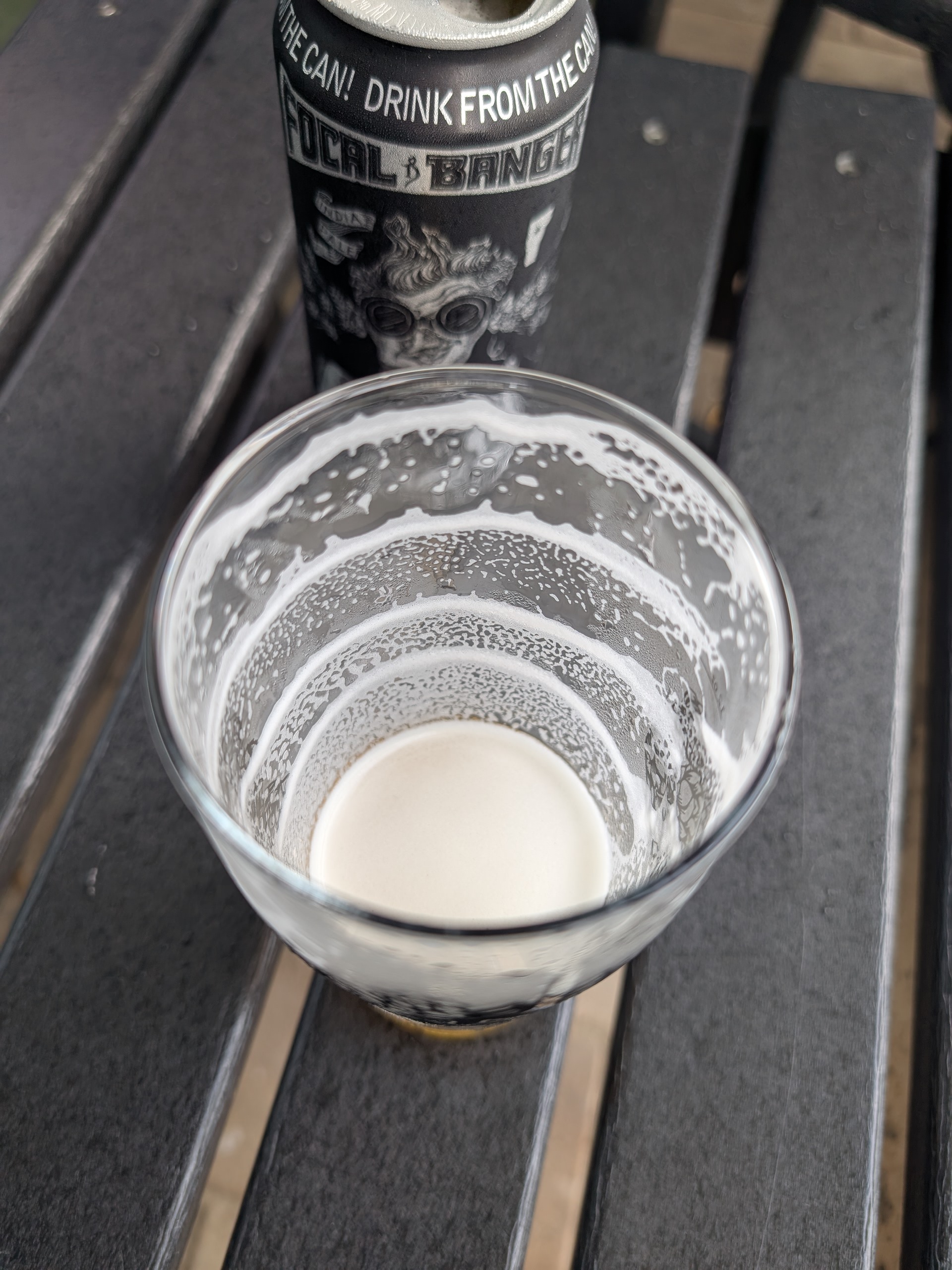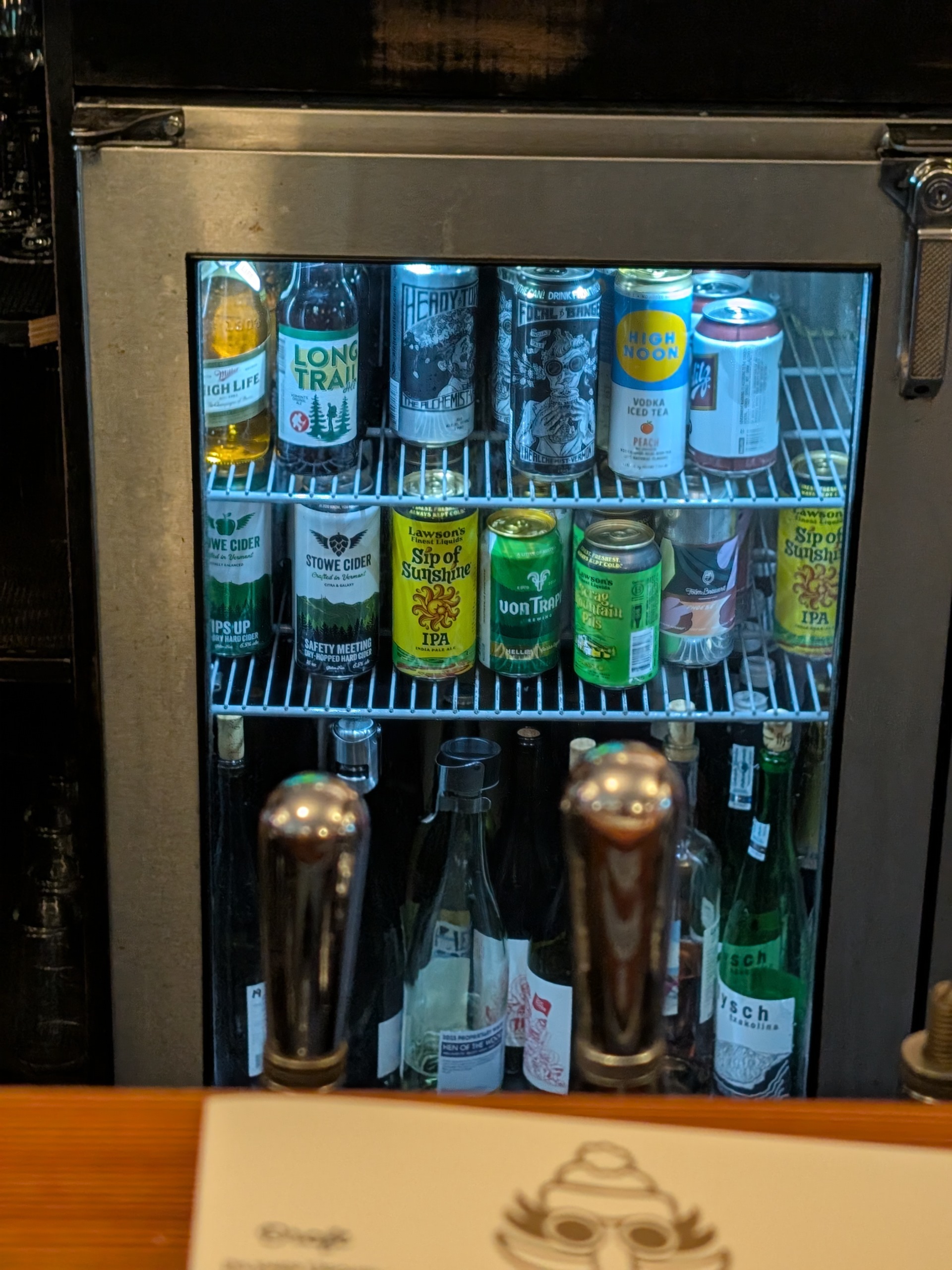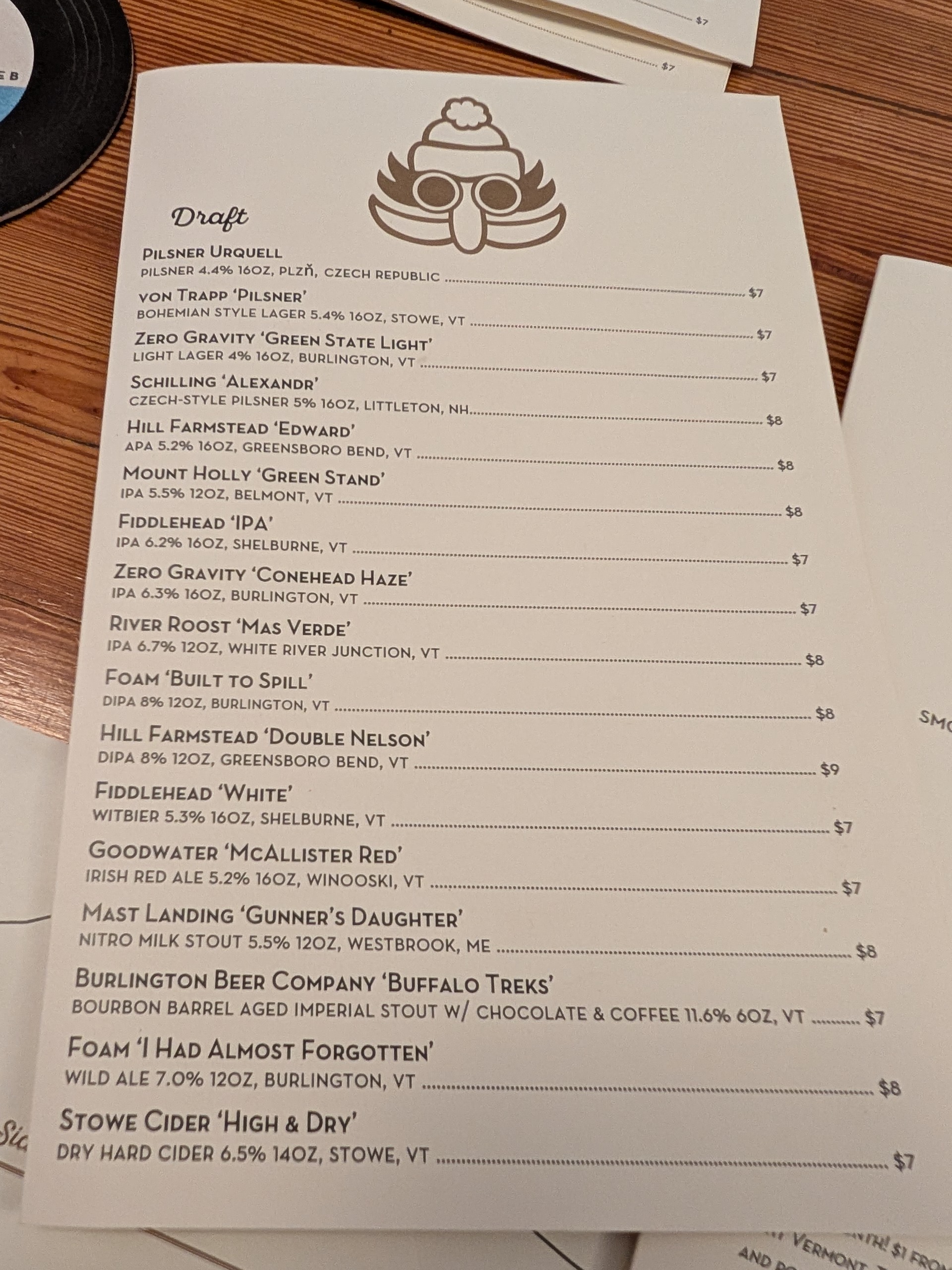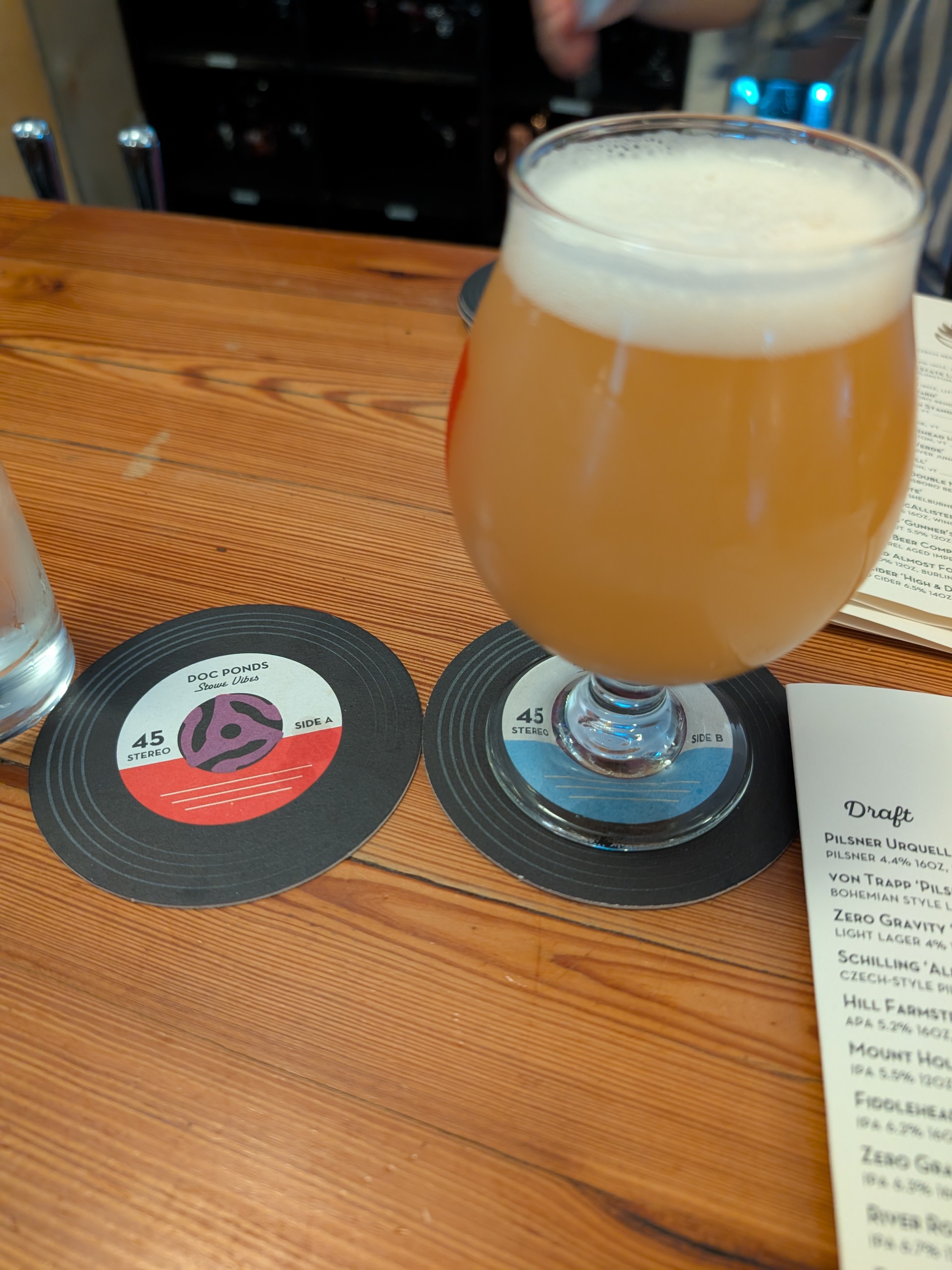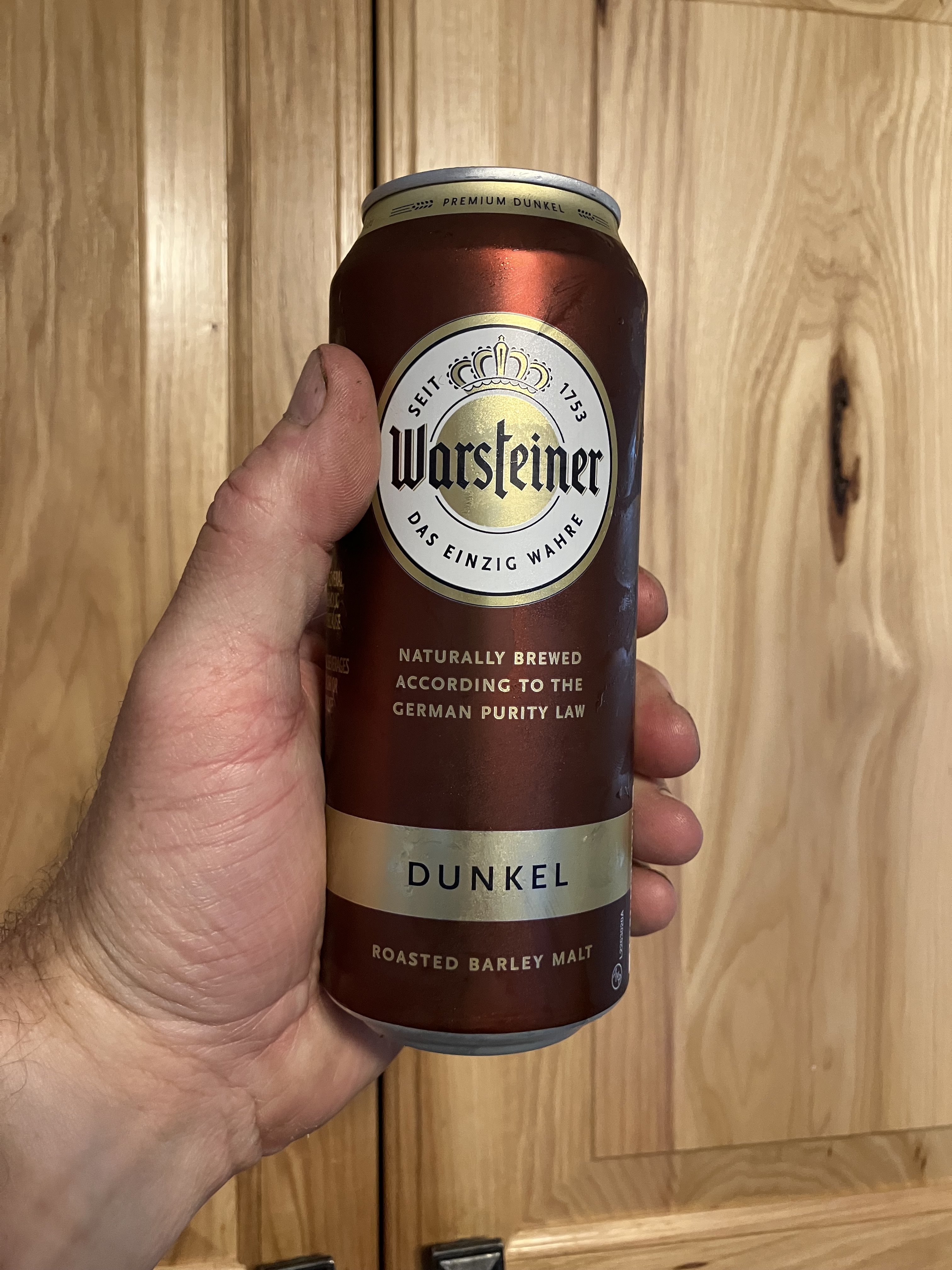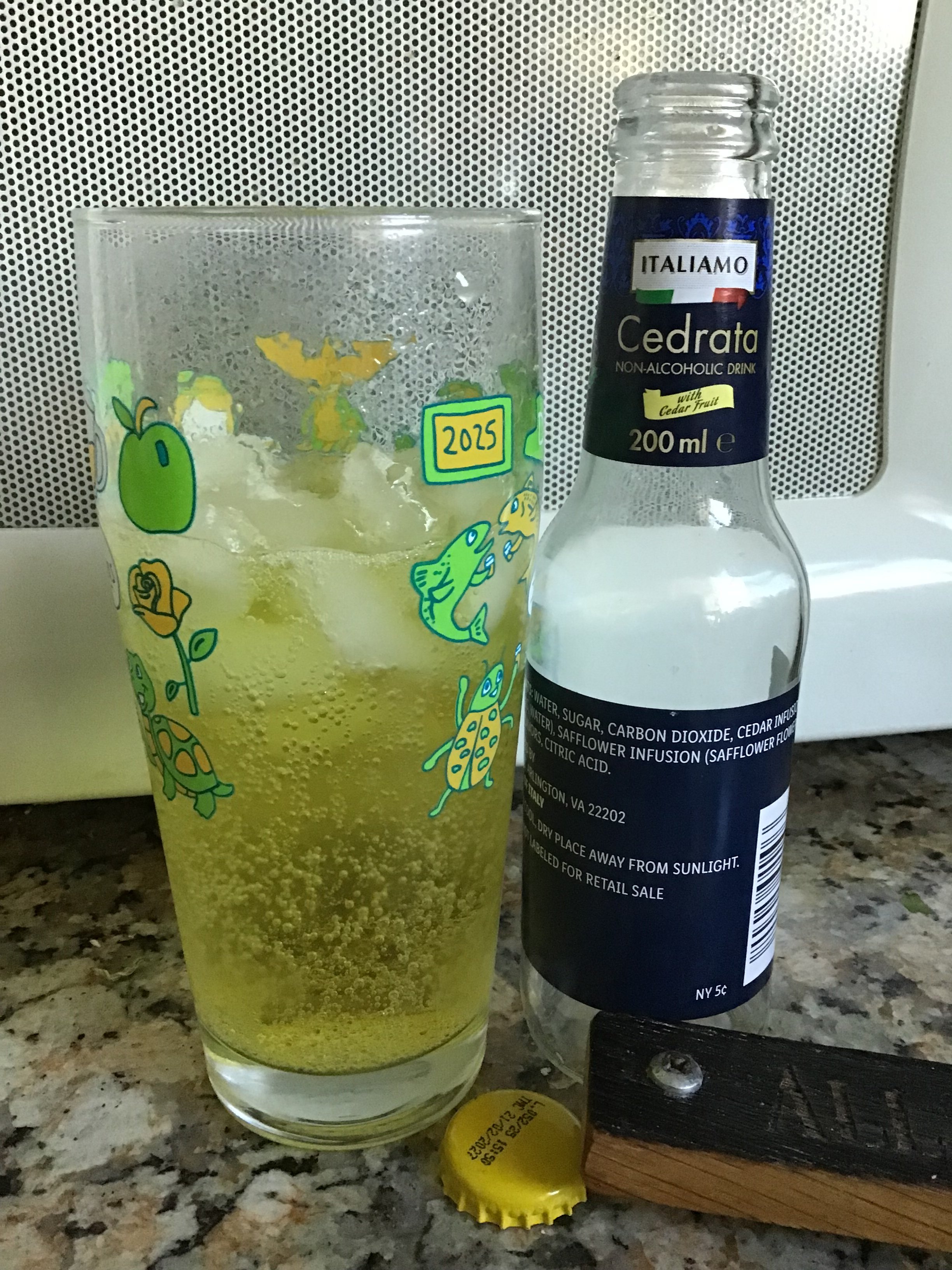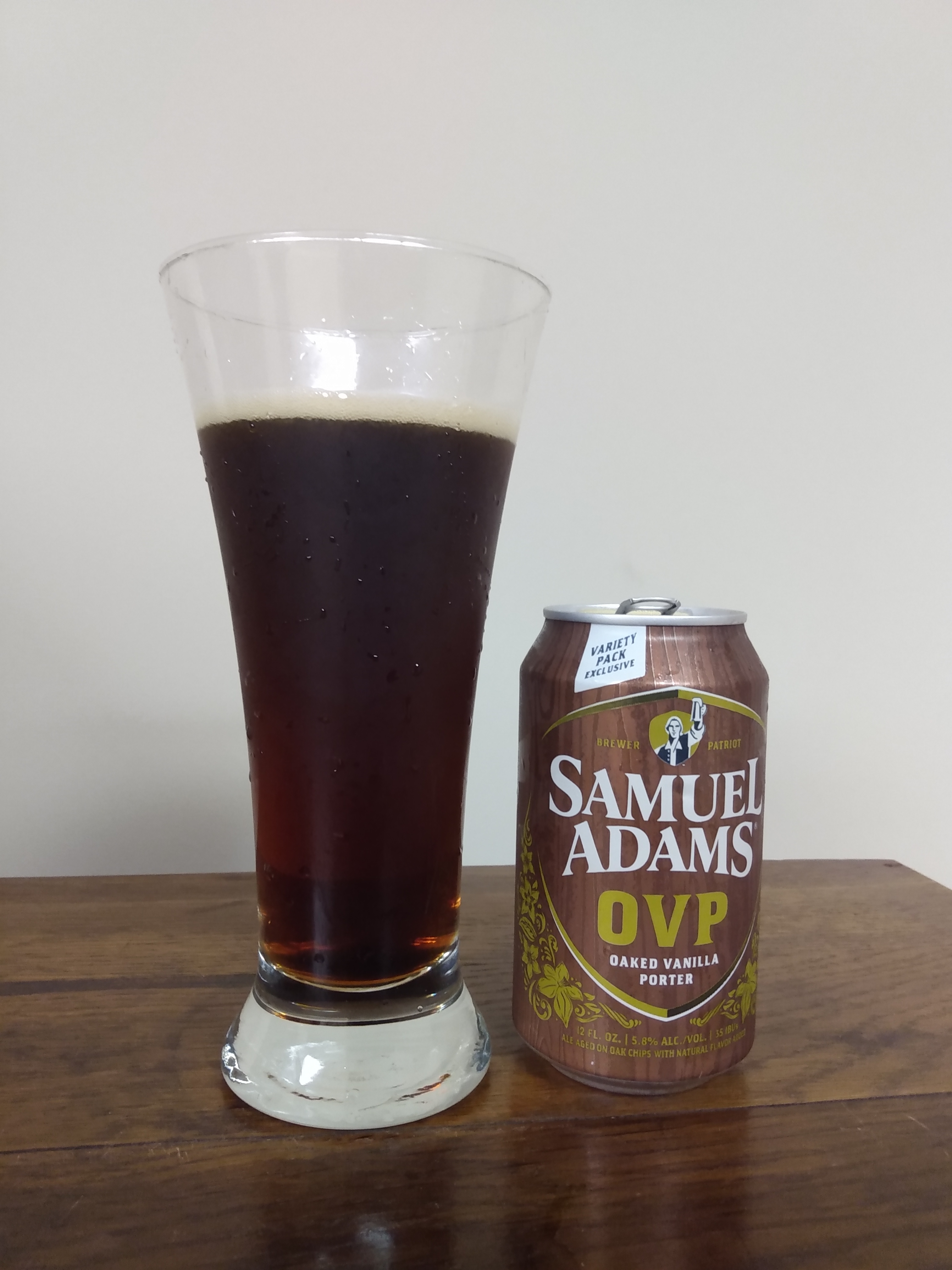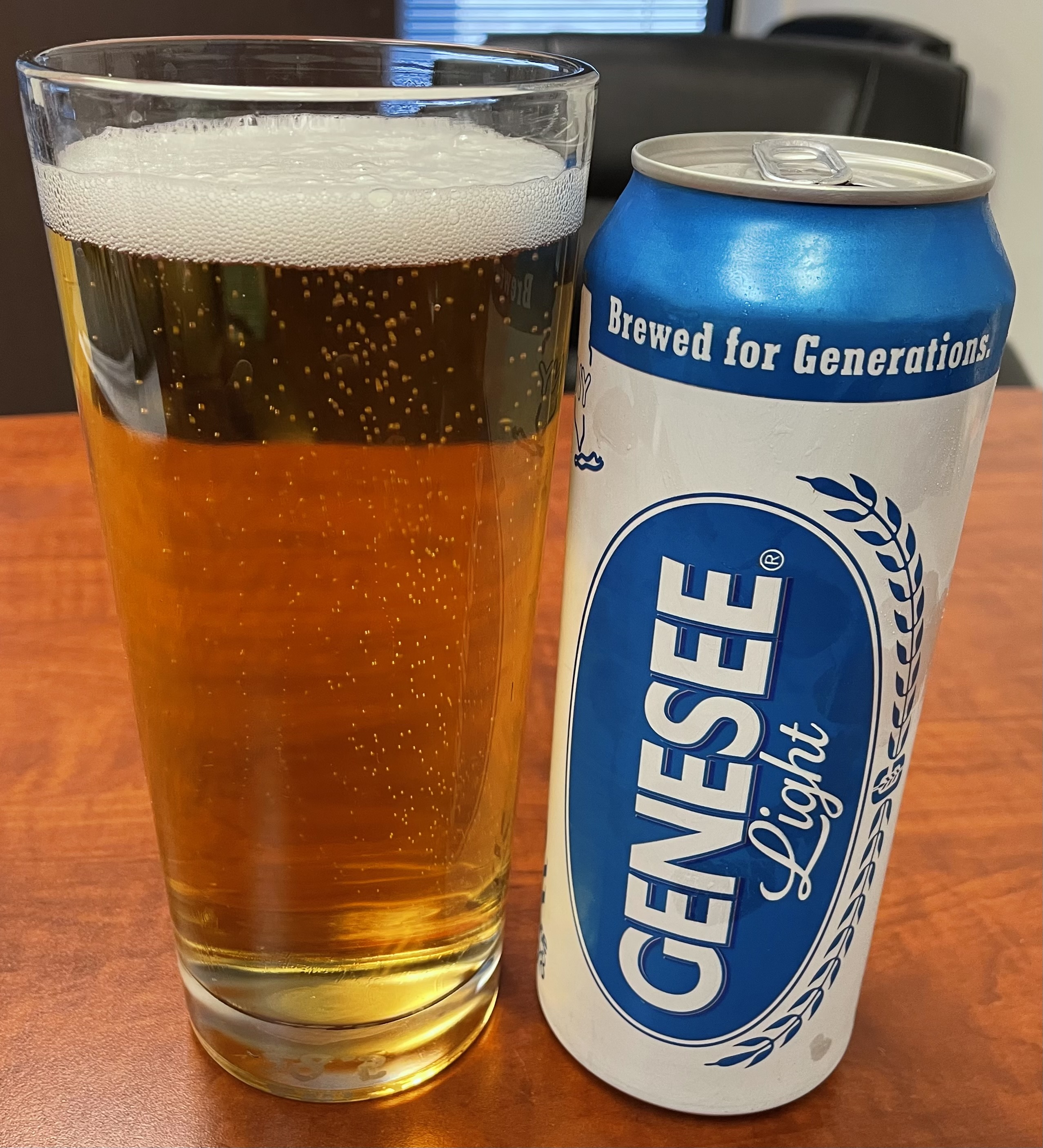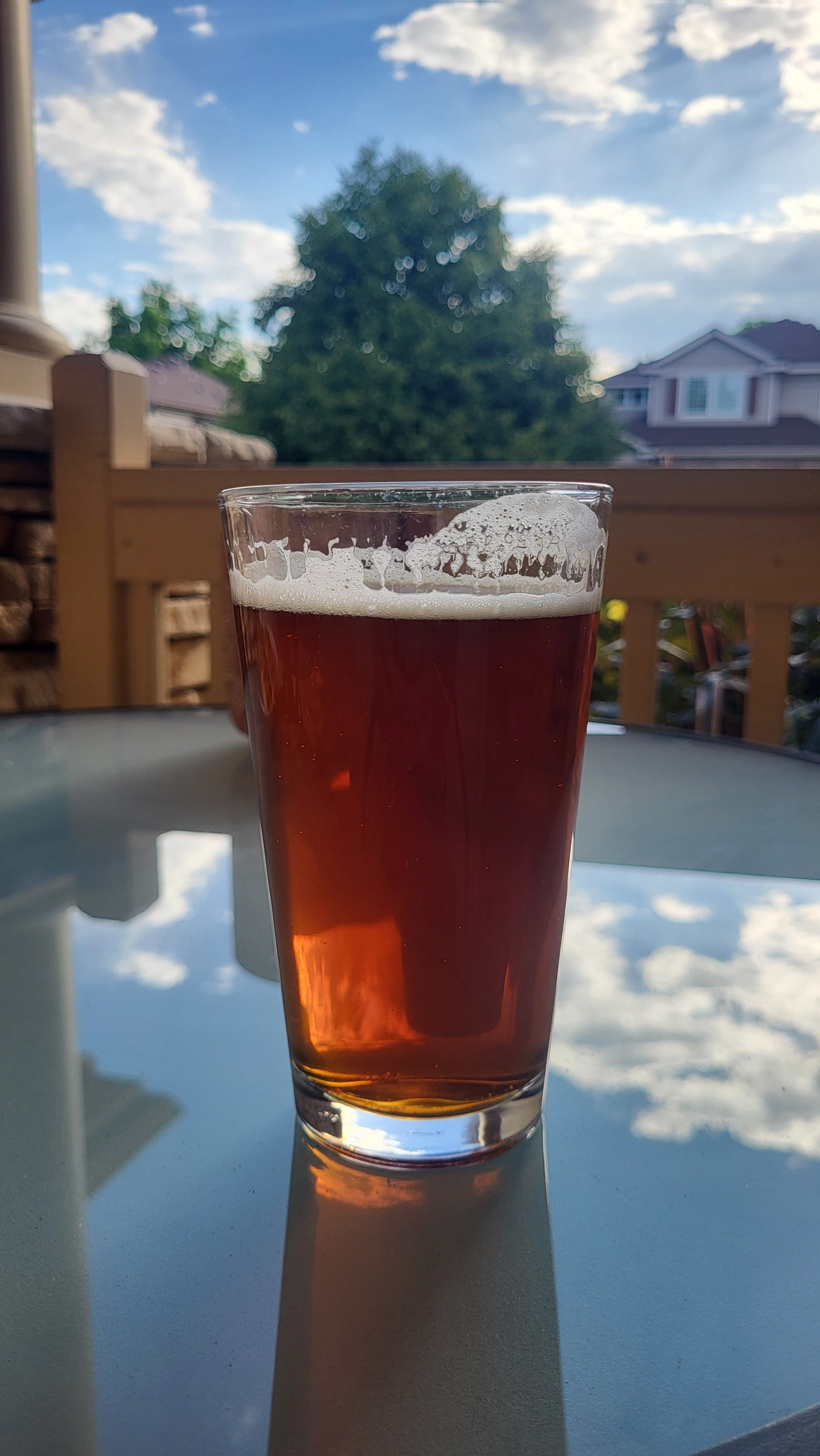Annoyed that the Giants are losing and my pint of ordinary bitter is hazy and bit rough from the keg hops, I hit on the idea to place three drops of 85% phosphoric acid into a new pint glass and pour another. With the first wave of evening T-storms having rolled through, I'm not sure how well the photographs demonstrate the degree of clarity that I picked up simply by adding three drops of acid. The ale still exhibits a noteworthy haze, but it has cleared by a couple of shades. The pH dropped from the original pint's pH 4.1 (on the high side for a UK ale) to pH 3.7 (a bit on the low side for a UK ale). More importantly, the roughness from the keg hops is gone, the grist is more forward, and the fruity-ness of the yeast has been pushed forward. The ale is much improved for the addition of the acid.
The thing that I don't get is that this ale was brewed
specifically to hit the post-boil pH 5.0 window, so .25oz of keg hops shouldn't have been that big of a deal--especially when you consider how aggressive UK yeasts tend to be with regards to lowering the pH of an ale. I considered adding some acid to the keg to counterbalance the hops, but decided to be lazy. It's only .25oz, right?
This is just a data point, so I'm not sure that I've really learned anything. But I do have a batch of Ron Patinson's 1971 Boddington's plummeting toward TG in the fermenter. I think I'll keg that one with .25oz of EKGs and, I don't know, 1ml of phosphoric? I normally run 1ml/oz of dry hops, so I think I'll go heavy on the acid with this next batch just to see what happens.
So here's the acid treated second pint.
Here's a third pint, in the same glass (hurray for tiny little UK ales), that hasn't been treated with acid. I hope you guys can see the difference. When the ale is in front of you, it's quite obvious. On the tongue, it's no contest.
Here’s the third pint, treated with three drops of phosphoric.
Edit: and here’s that third pint having been allowed to sit for 10-15mins while the acid does its thing.
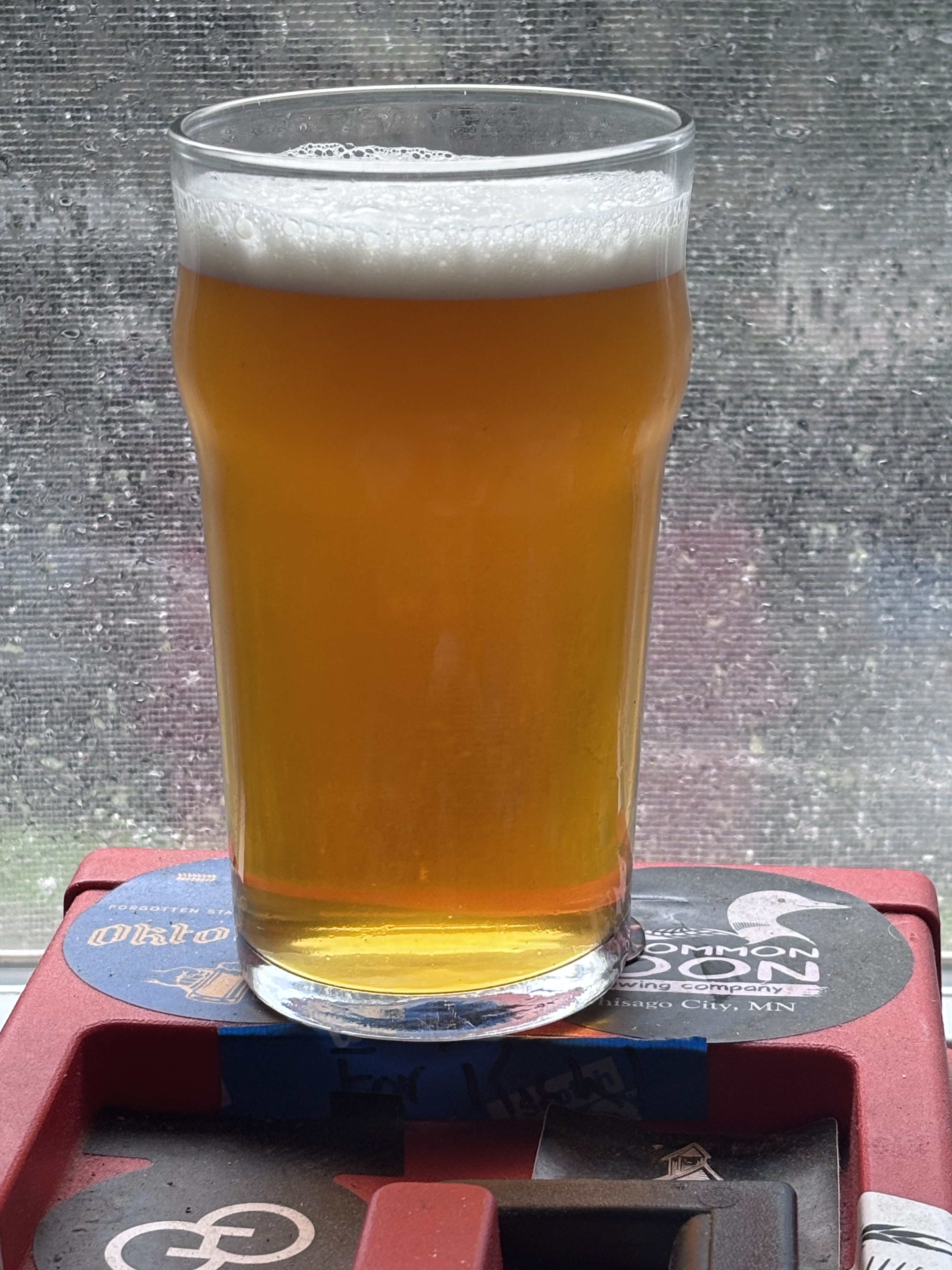



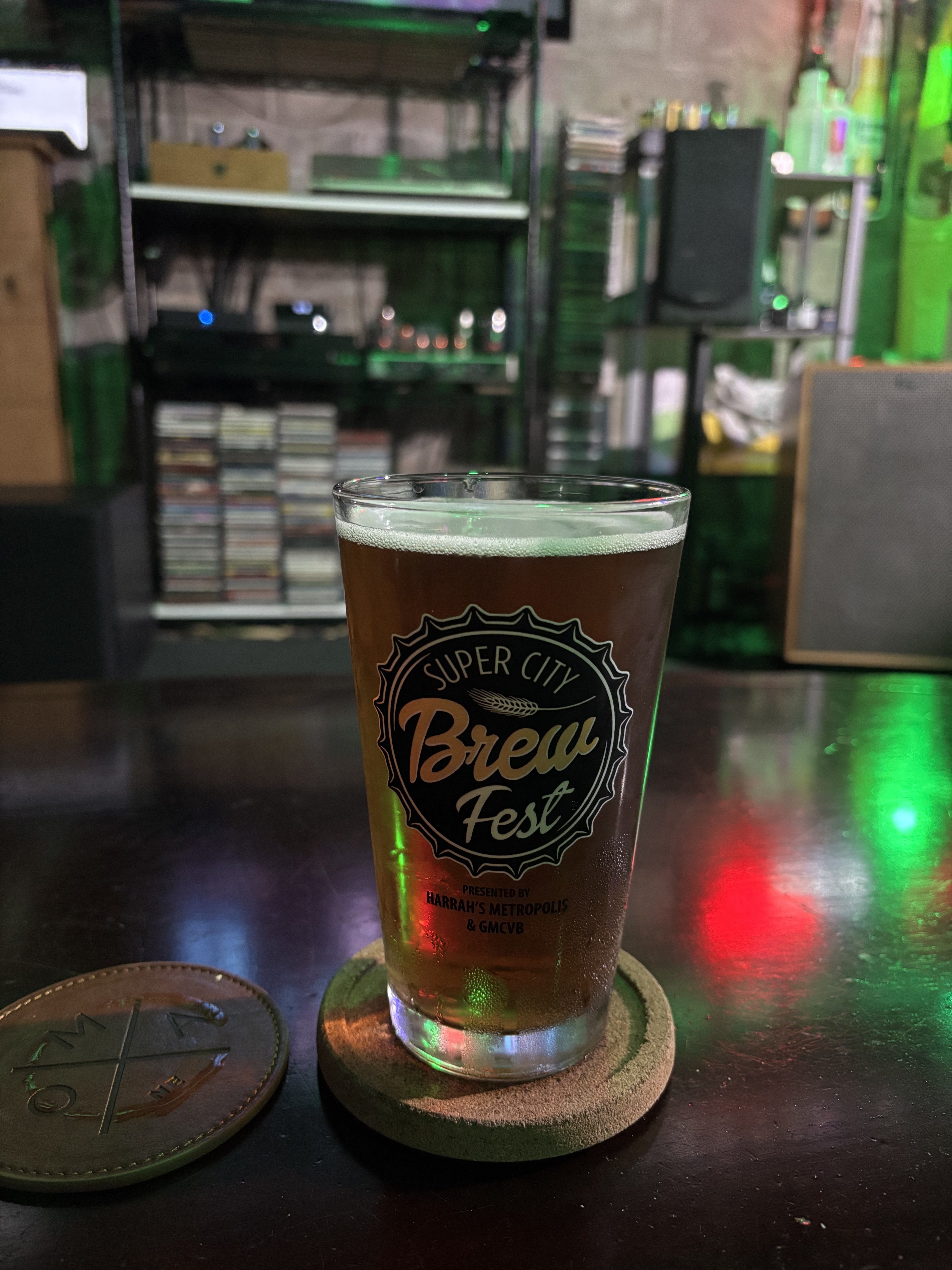

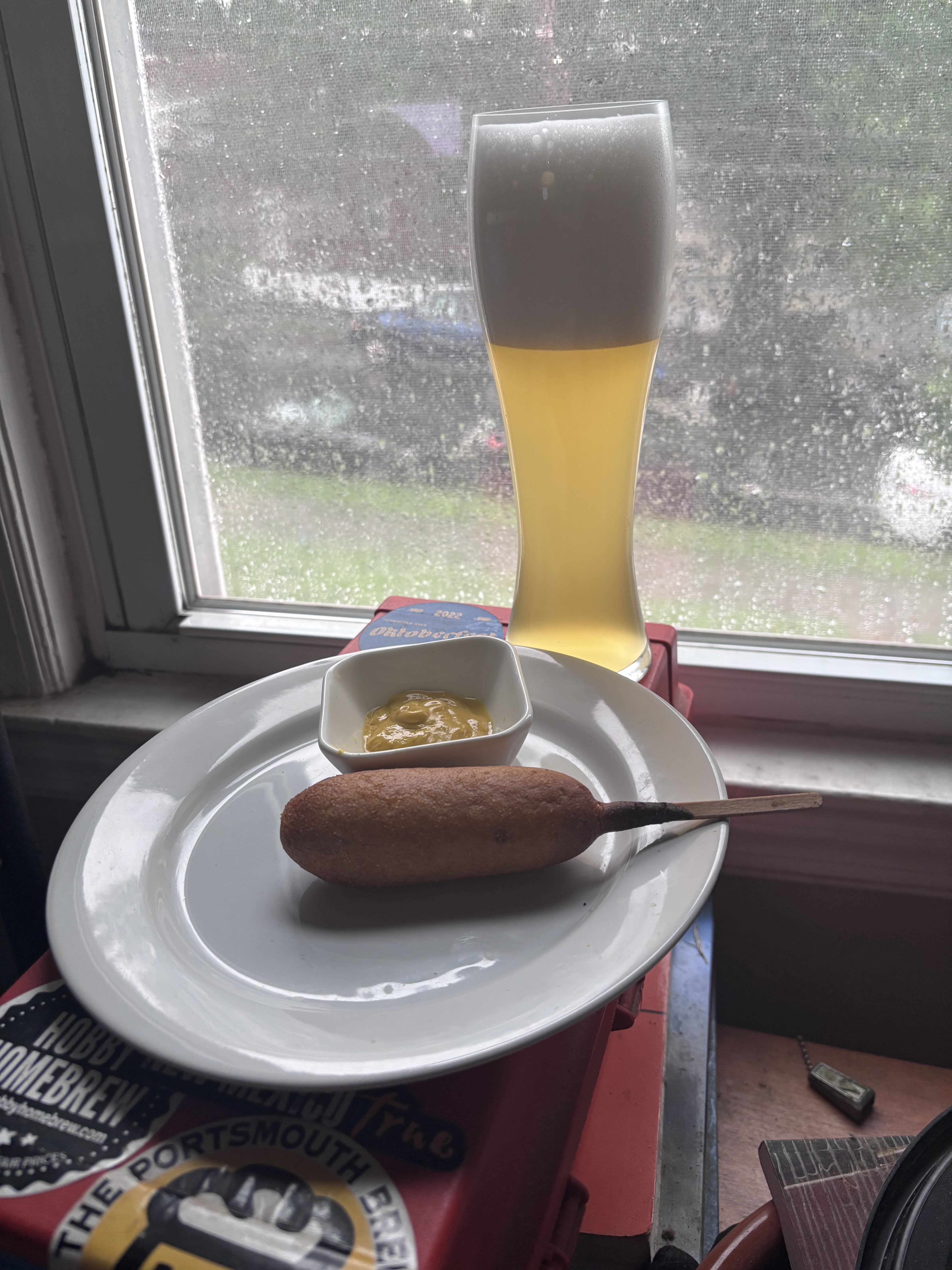



























![Craft A Brew - Safale S-04 Dry Yeast - Fermentis - English Ale Dry Yeast - For English and American Ales and Hard Apple Ciders - Ingredients for Home Brewing - Beer Making Supplies - [1 Pack]](https://m.media-amazon.com/images/I/41fVGNh6JfL._SL500_.jpg)



























